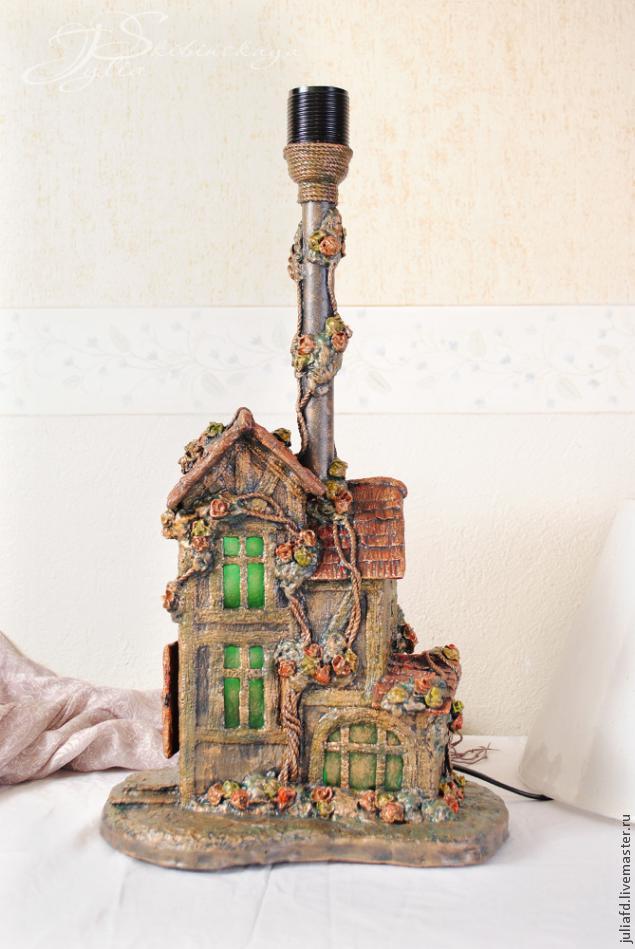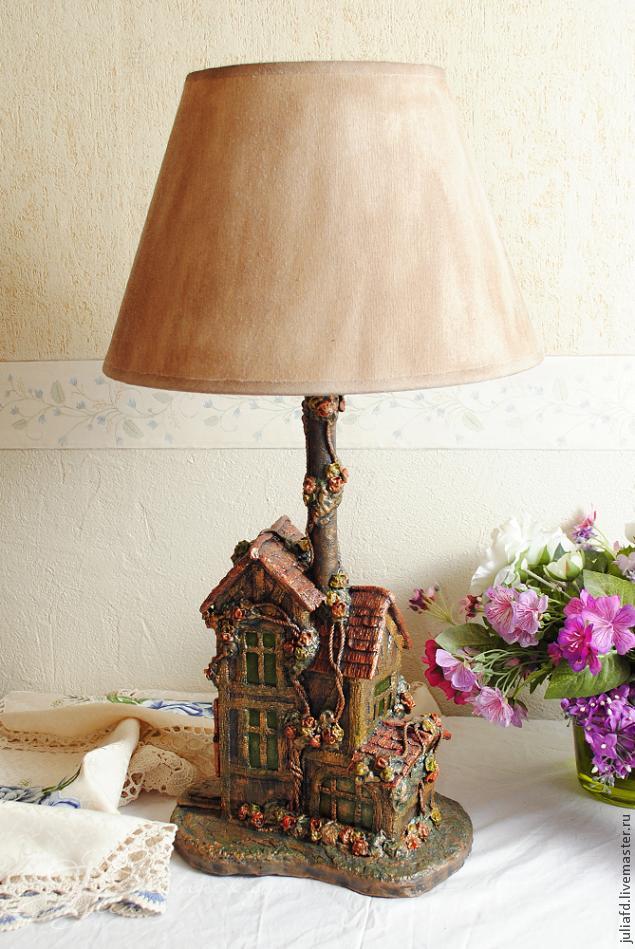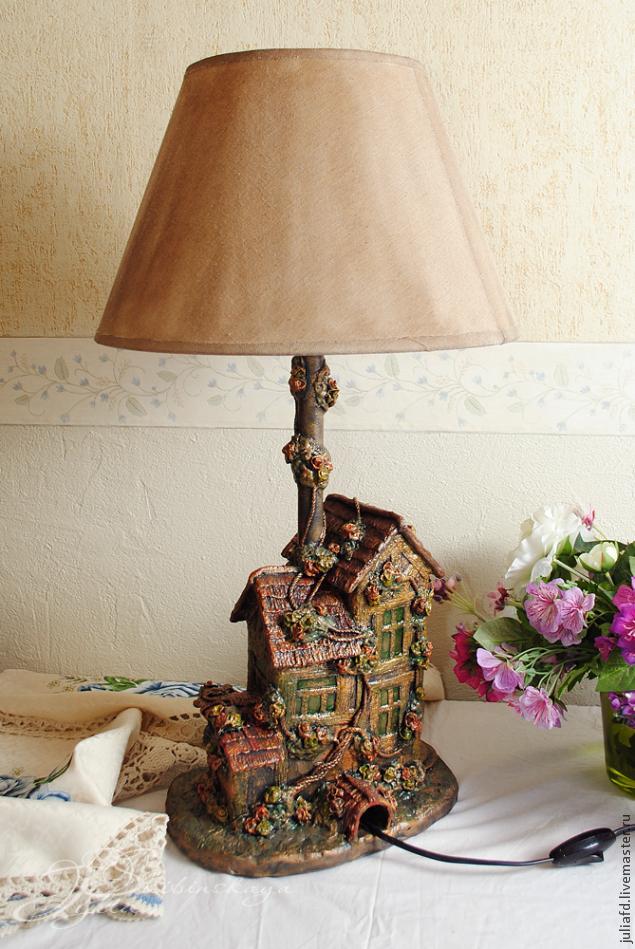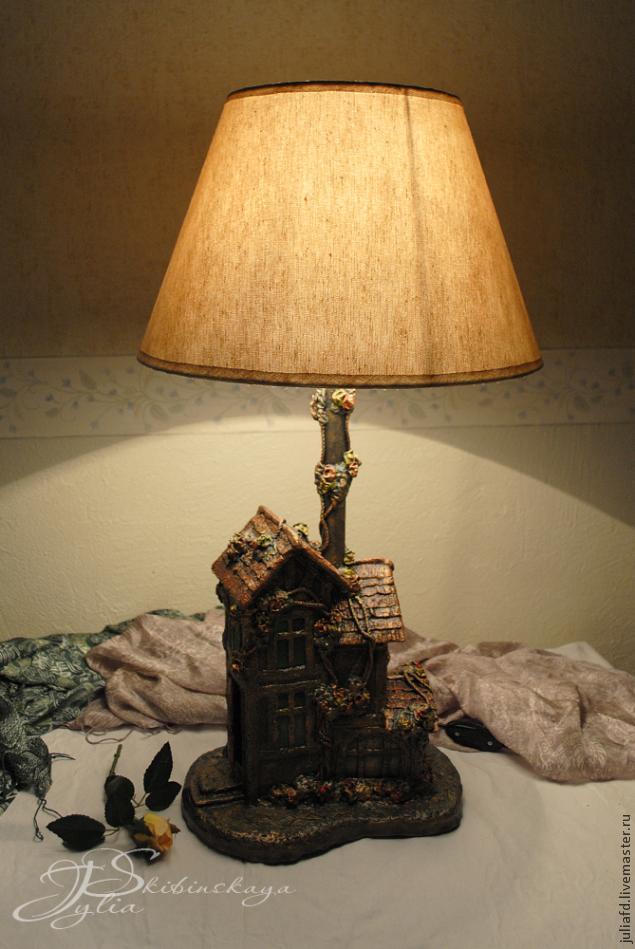The Five Pointed Prism lamp is made up of ten geometrical panels, which makes a prism, displaying the same repeated pattern all the way through giving out beautiful rainbow colours around your chosen space
I use only LED lighting in my designs to contribute to keeping the environment friendly.
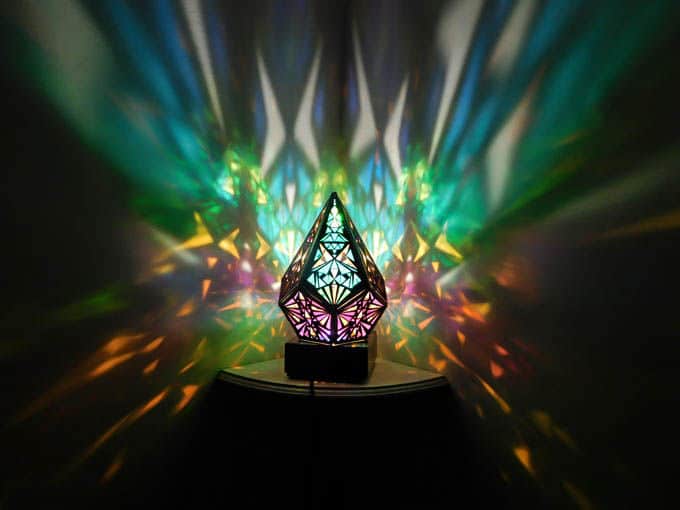
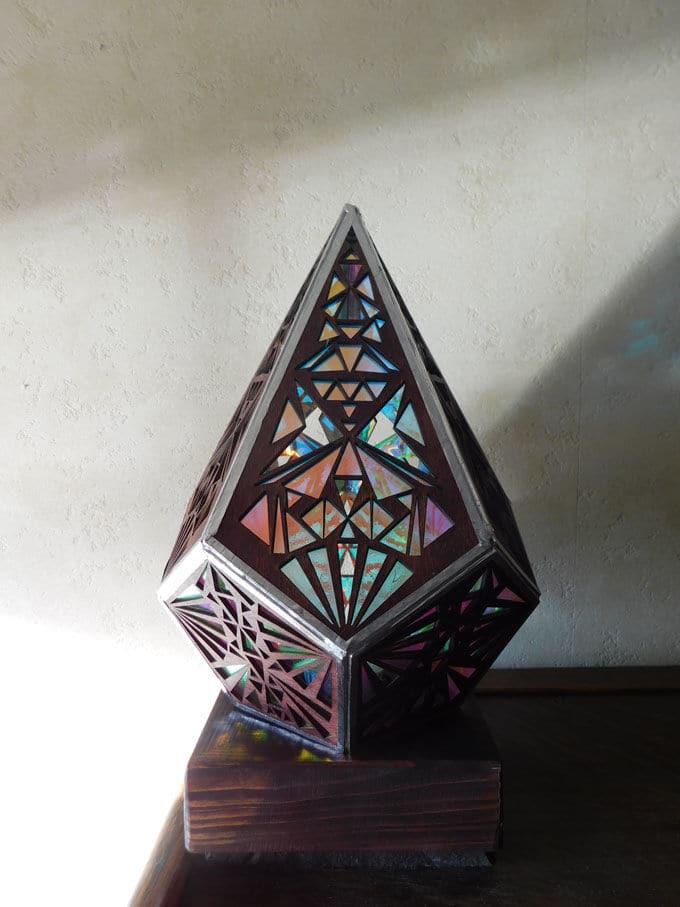
Step 1: Begin Drawing/Designing Geometric Shapes
 I begin by drawing my design on paper with rough sketches. I really enjoy geometrical shapes so I wanted to design one. I have had many failures on this design as I was not getting the mathematical measurements correct but I got there in the end. This is then drawn in illustrator to make this mathematically correct. I then send this file to a local laser cutter company to get these cut out of birch wood.
I begin by drawing my design on paper with rough sketches. I really enjoy geometrical shapes so I wanted to design one. I have had many failures on this design as I was not getting the mathematical measurements correct but I got there in the end. This is then drawn in illustrator to make this mathematically correct. I then send this file to a local laser cutter company to get these cut out of birch wood.
Step 2: Staining, Attaching Acrylic Film to Templates
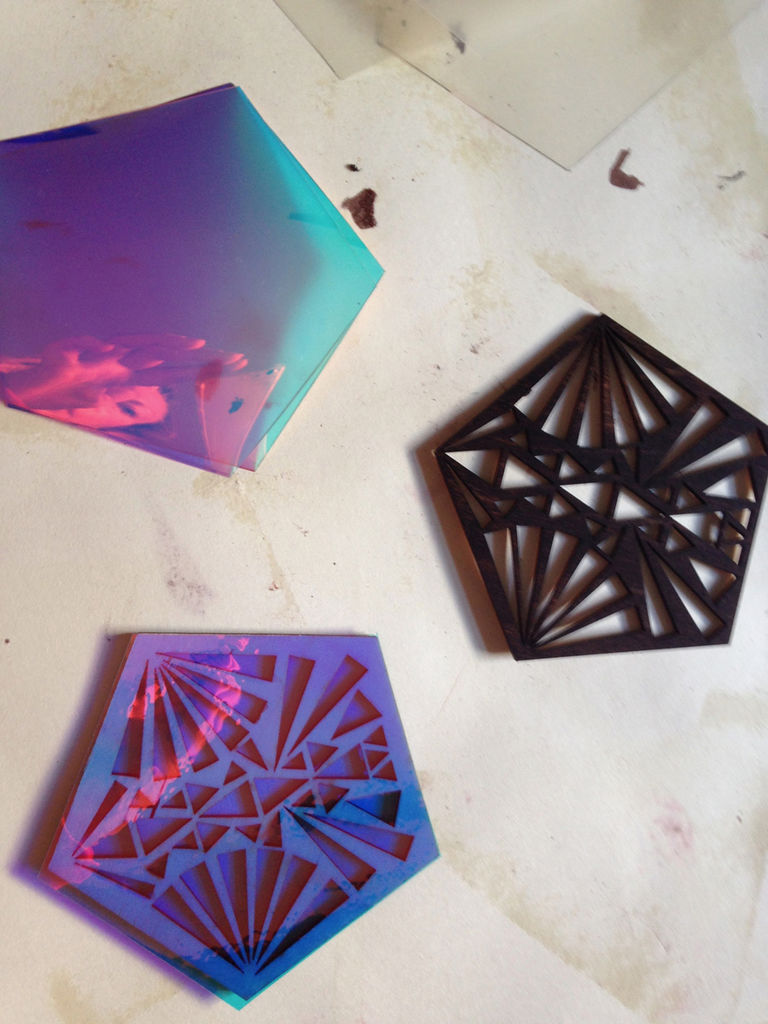
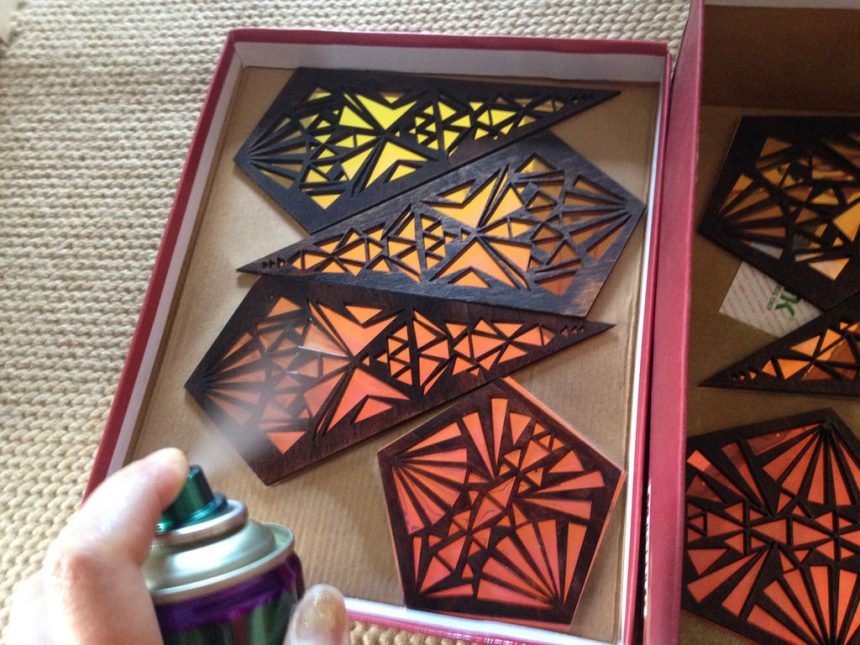
When the 10 templates have been cut (5 large and 5 small) to make a prism shape, I then stain the wood in a rich dark chocolate colour and leave to dry.
To get the wonderful colours, I use an acrylic iridescent fil.
Adding the acrylic film:
I then cut out the correct size shapes out of iridescent acrylic film by hand, This acrylic film is super colourful, covering the whole rainbow spectrum, purples, pinks, oranges, greens, blues and from metallic and copper colours, depending where you view the material from as this changes in an instance from one angle to the next
This is then stuck to one side of the wooden templates.
I have to spray the wooden template to set the film as it has an adhesive so this stops any dust attaching while its sticking to the wood.
As seen in the images, you can see the film gives out a real colourful coppers & metallic colours as well as blues/purples, this is the great thing about the material. While this is setting for 24 hours, I get to work with making the wooden base.
Step 3: Base Making
The wood varies from oak, ash, birch, rose, walnut, basically any thing I can get my hands on, from local saw mills, suppliers and wood merchants. Up cycled wood comes into my projects a lot as I like to use wood which people don’t require any more from tables, chairs, doors any thing really. I also find wood in forests.
You have to make sure the wood is air-dried for at least a good 18months other wise the wood splits.
I then cut this to size on my a table saw. I then clamp 5 sides together and leave to set for 24 hours. When set, I then sand this down with 3 different grits to get a clean finish, leaving the wood smooth and soft.
I then stain the wood in the rich dark chocolate colour to match the wooden templates.
Next stage is wiring up the lamps. I use a vintage spiral cord and only use LED bulbs for my lamp.
Step 4: Back to Lampshade Making
Now the acrylic film is set, I use my craft knife to cut out shapes with in the template. This takes time as I have to be vary careful to not cut where is not need as this will show through when light is projecting. Cutting the shapes out lets the natural light beam through.
I then copper foil each template and the solder each template individually around both side with soldering iron. I found this to be the best way in constructing the lamp.
Step 5: Assembling the Lamp
To assemble my lamp:
This part is tricky, as I need two pairs of hands to do this so I ask fellow artists and my family to help me with this part. It’s very fiddly and getting the angles correct is challenging but well worth the finished out come. I do the soldering while I have an extra pair of hands to hold the templates to gather so I can pin them together with the solder. When the structure is complete, I then can go round the whole lamp and tidy up and fill all the gaps in with solder to make it neat and tidy with clean edges
The lamp sits at a height of 37cm and width 23 x 23 cm
I hope you have enjoyed my processes. If you have questions, then do ask.
courtesy: Amberlightsuk
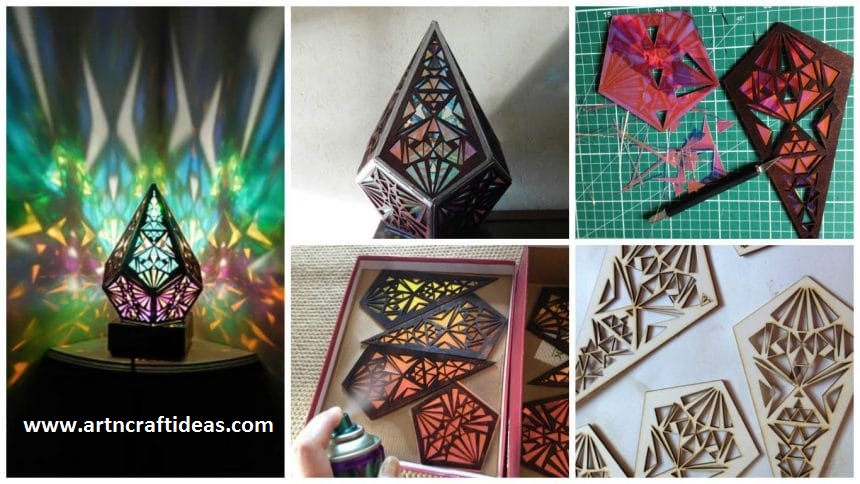

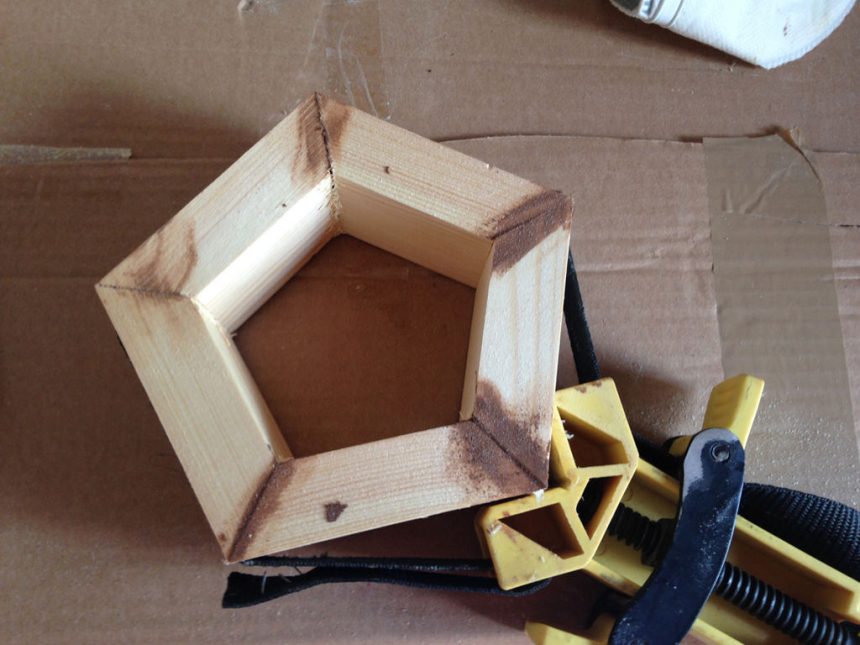


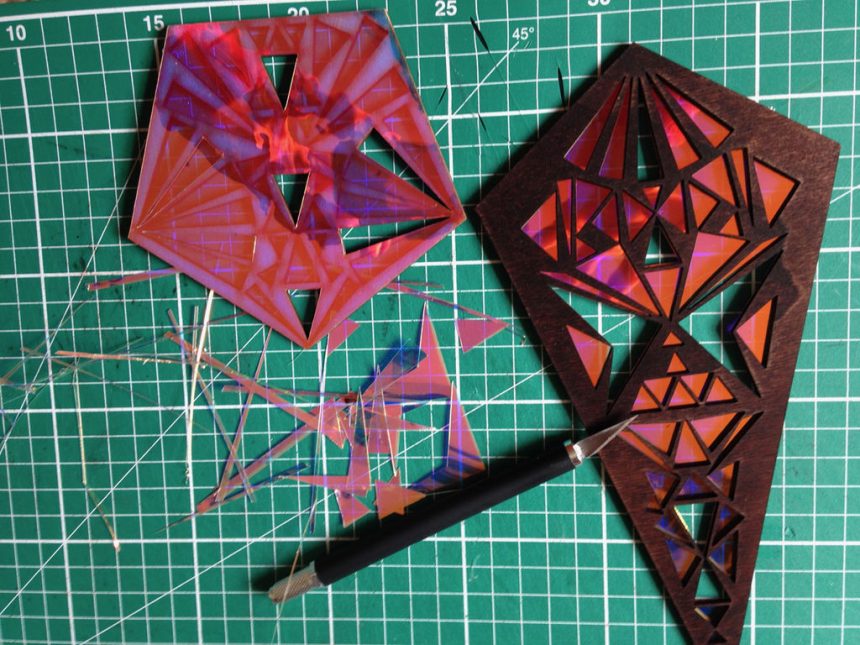


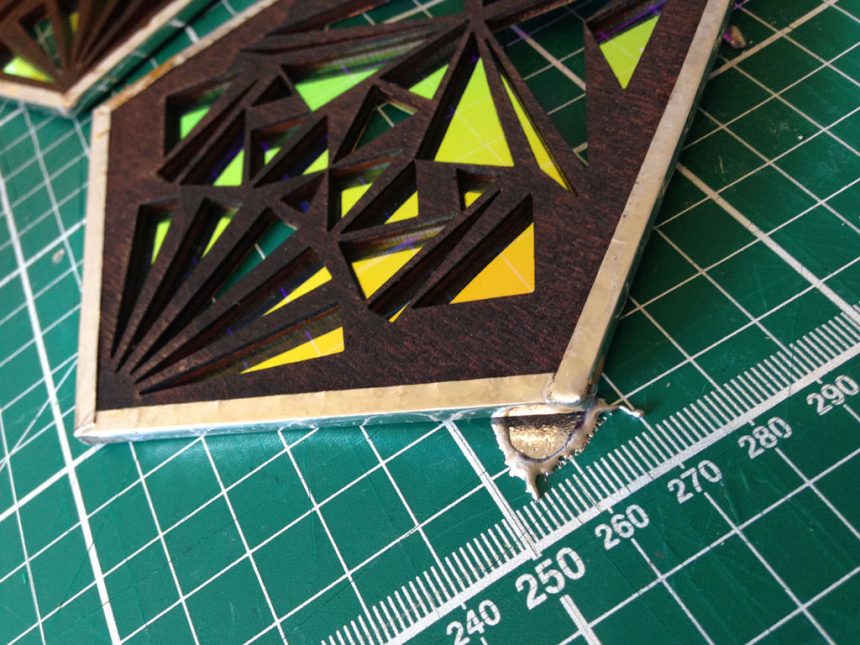

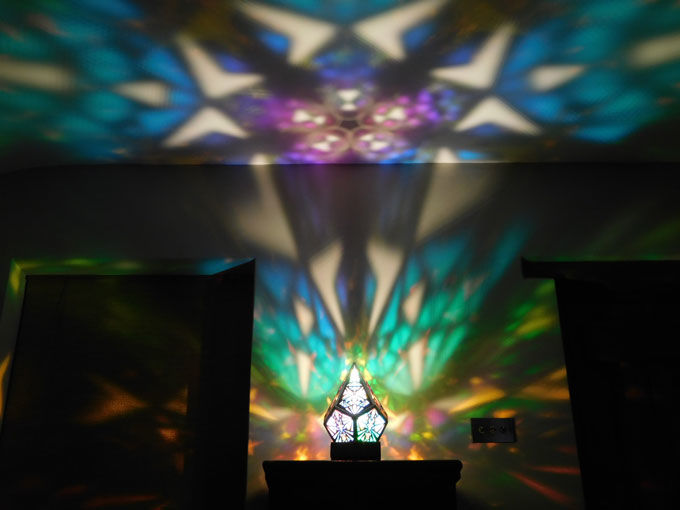
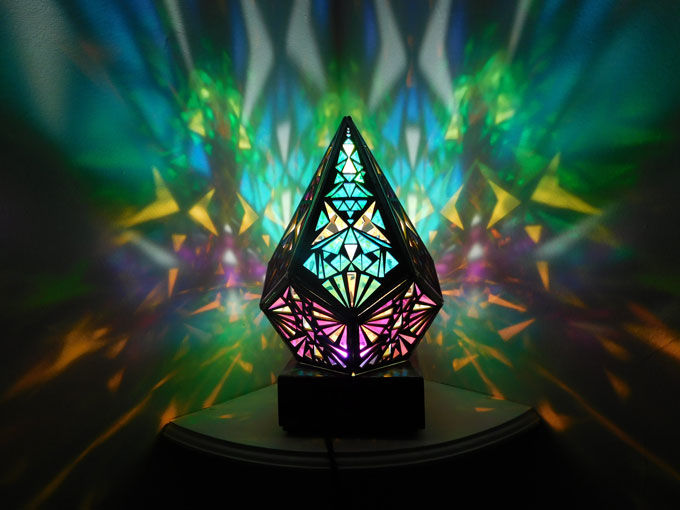

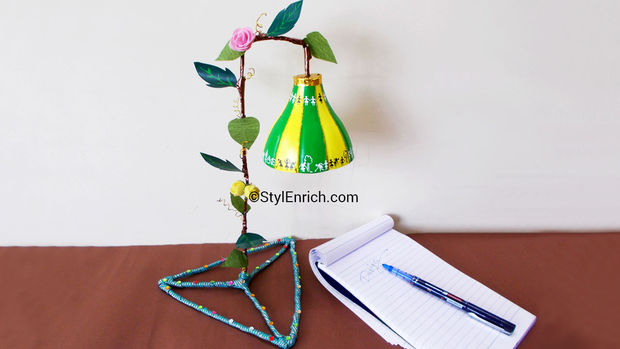
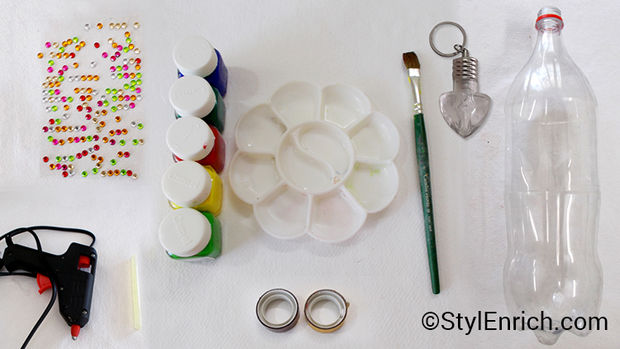 Step 1: Cut the Plastic Bottle
Step 1: Cut the Plastic Bottle
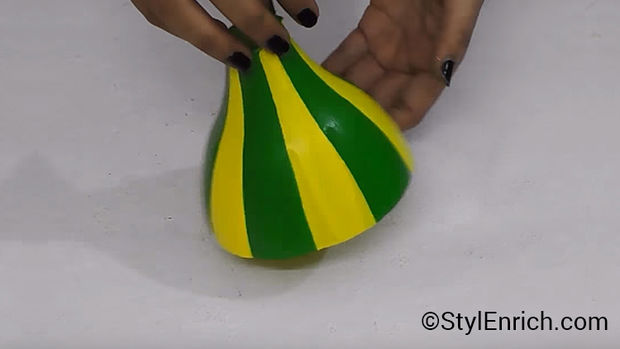

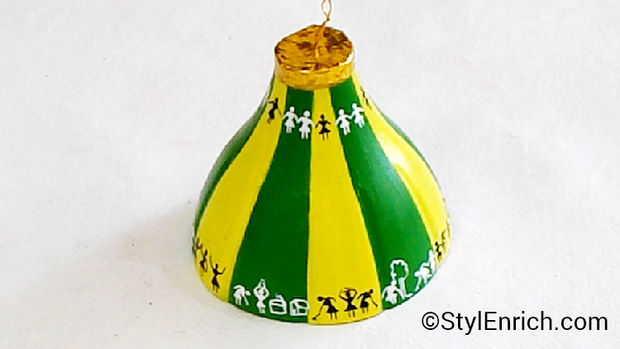



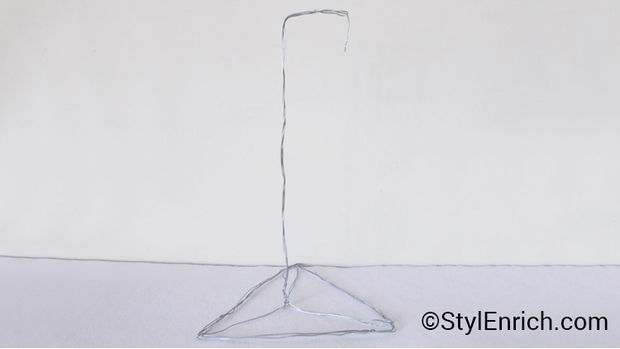



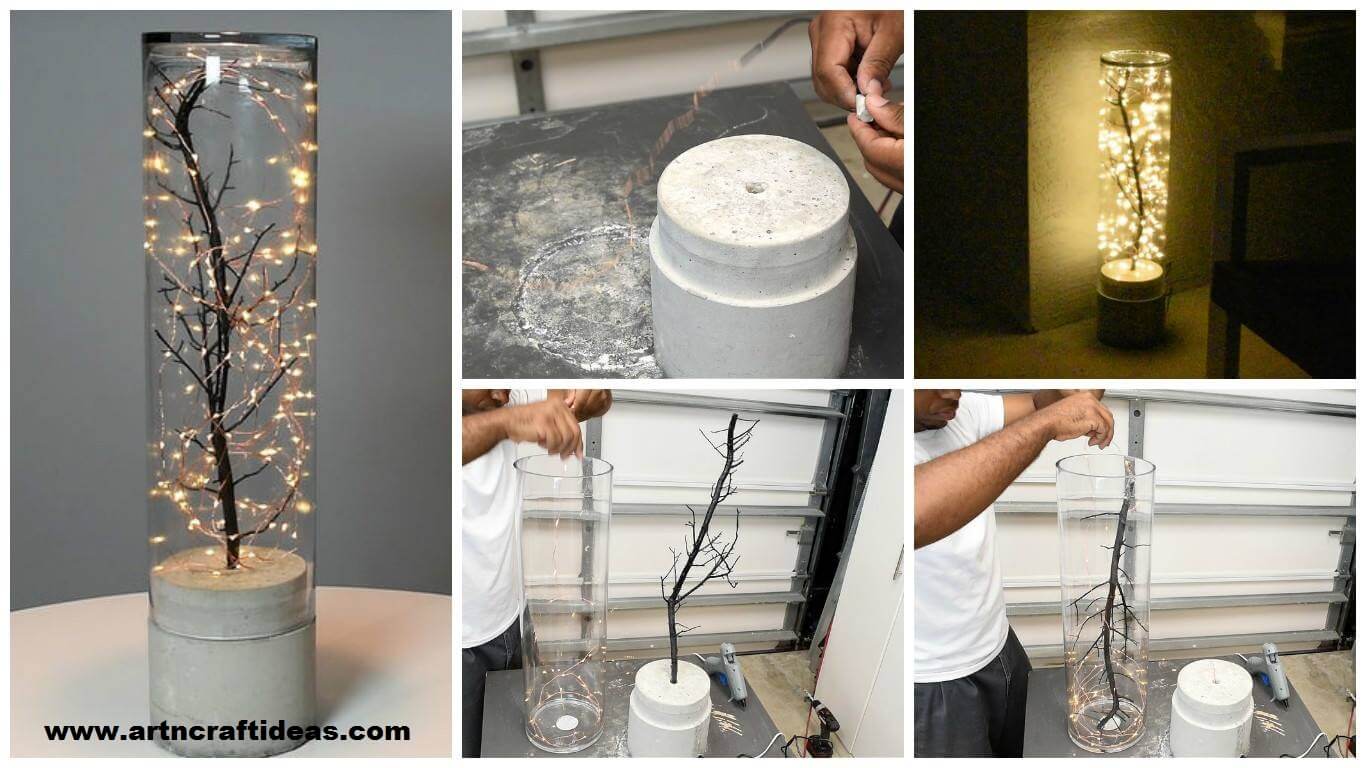

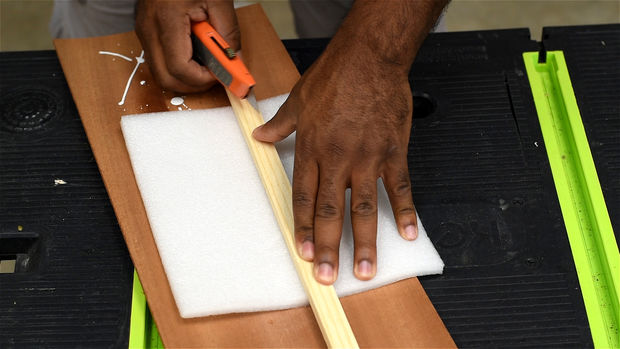

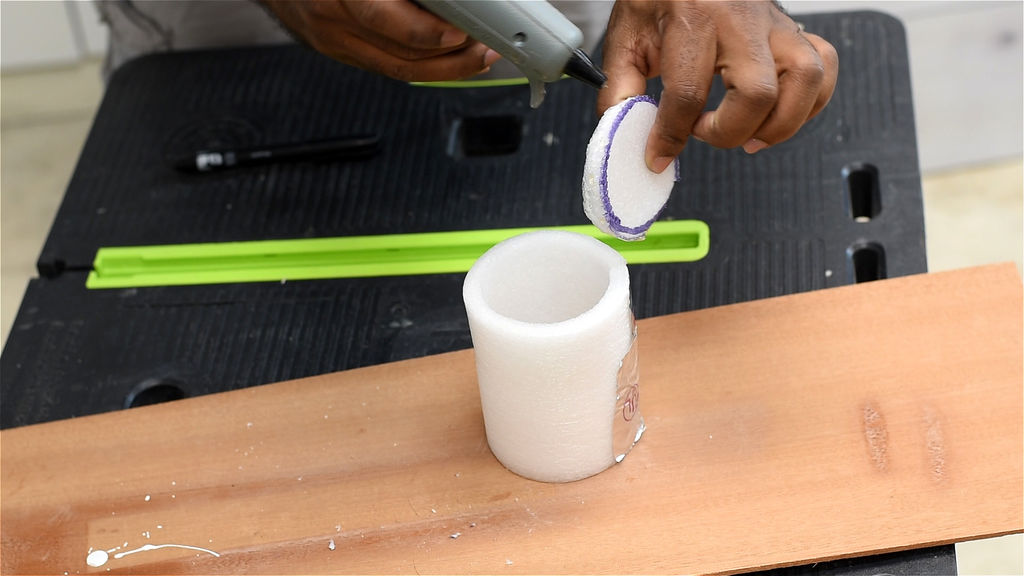 Creating the Concrete Form:
Creating the Concrete Form: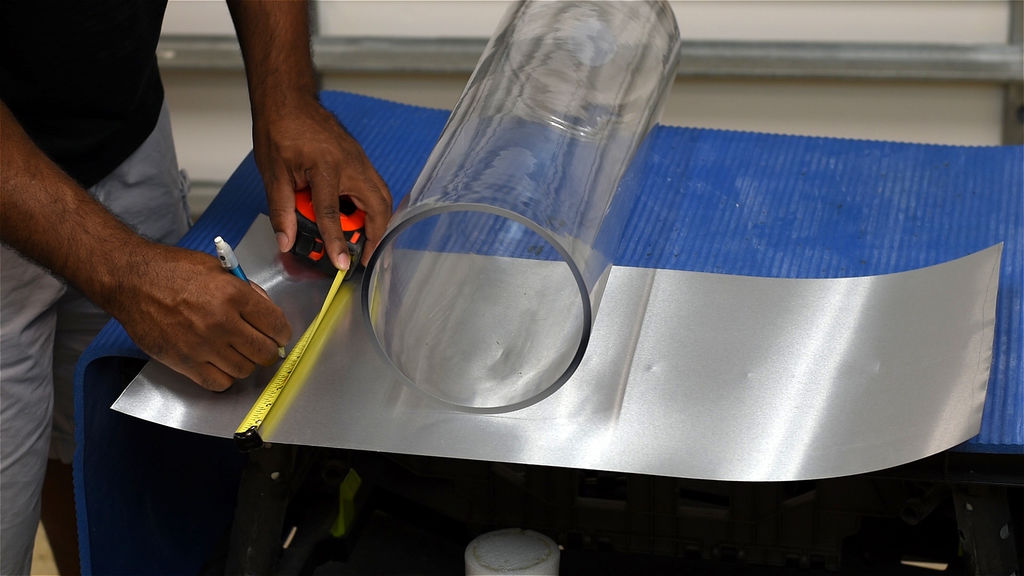
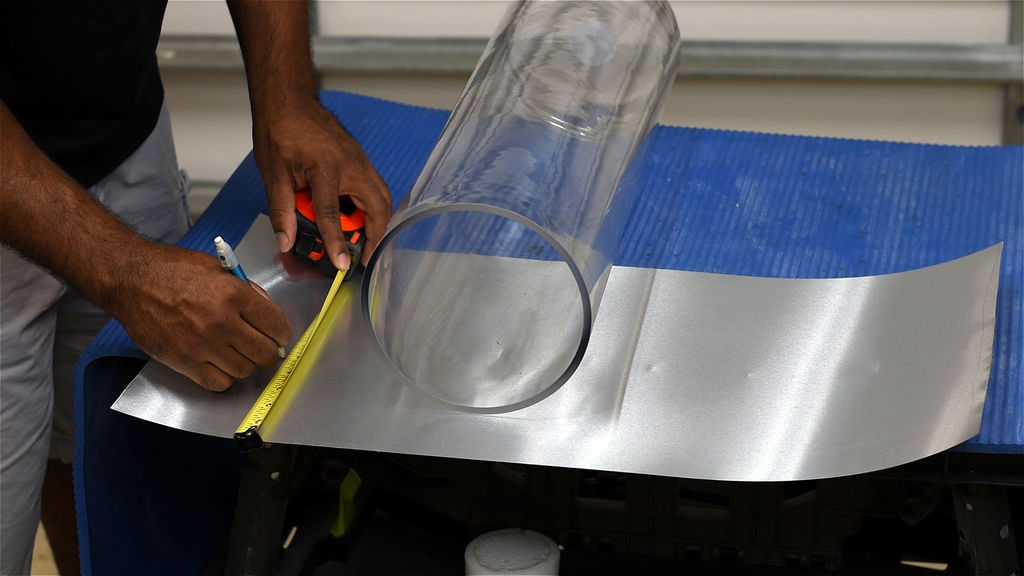


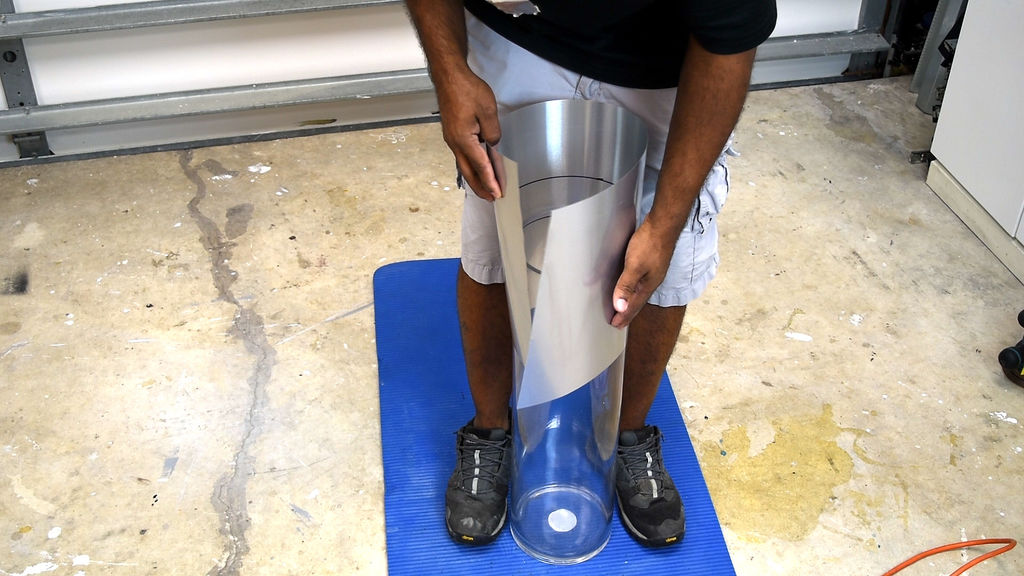
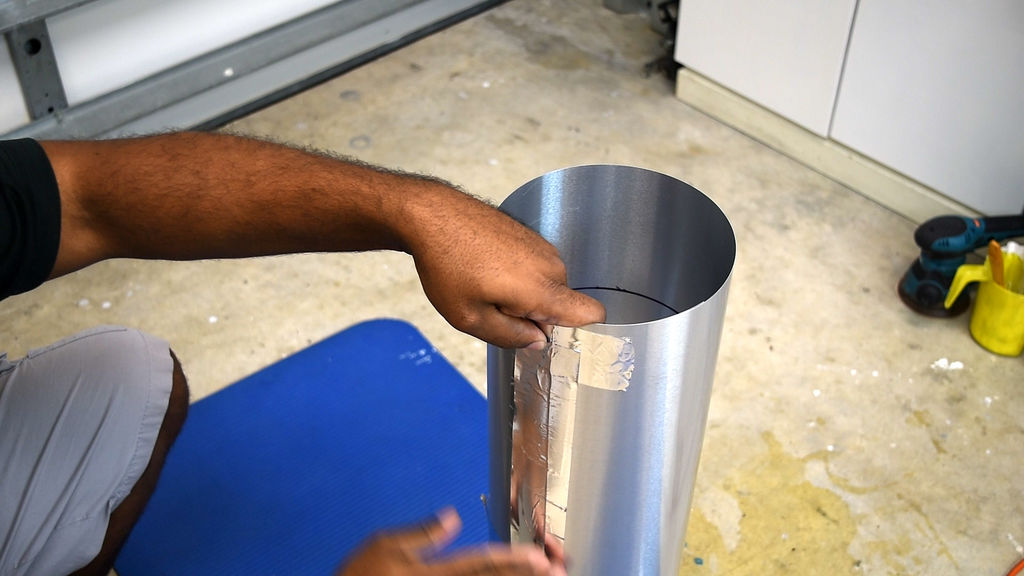


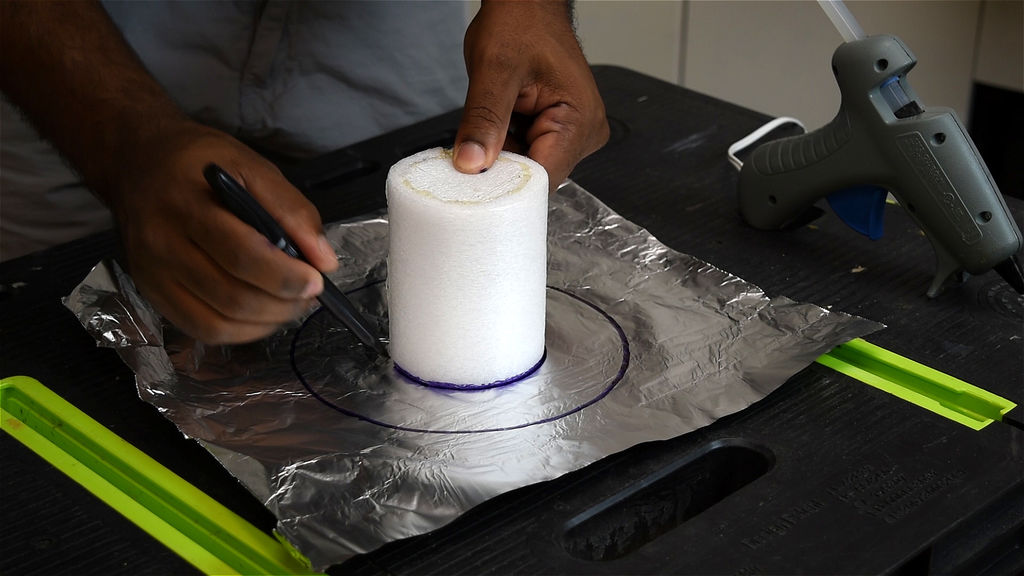
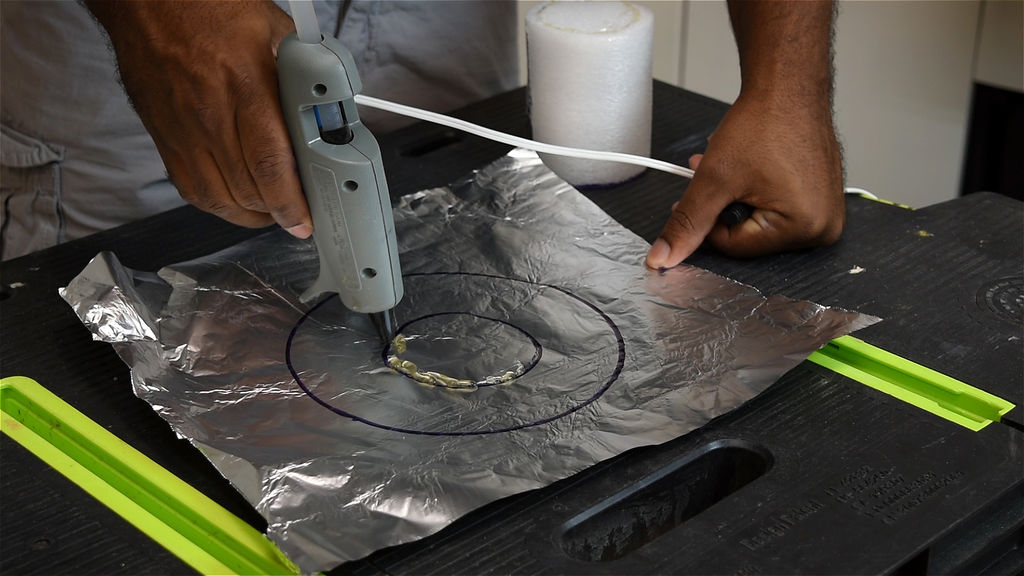
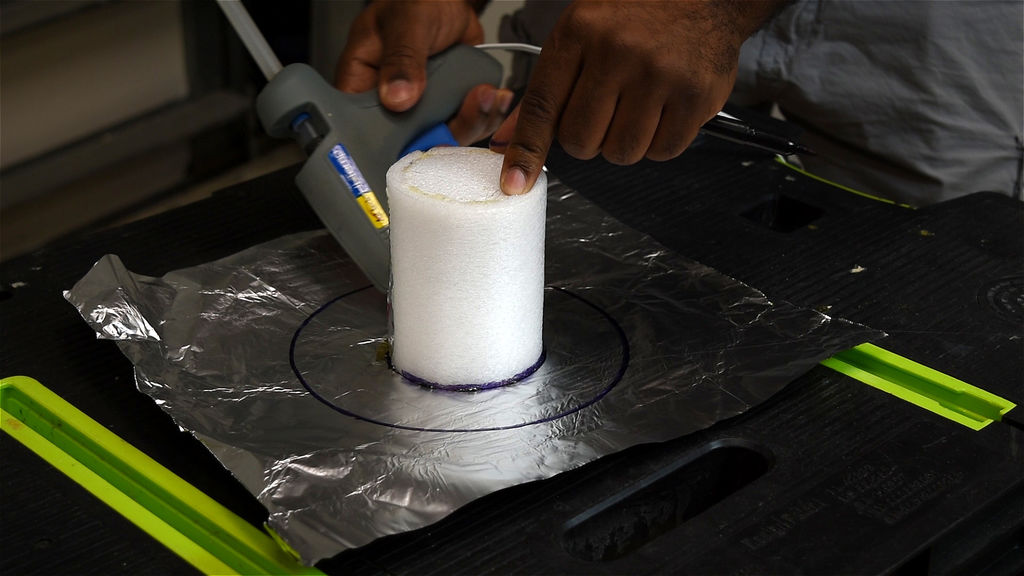


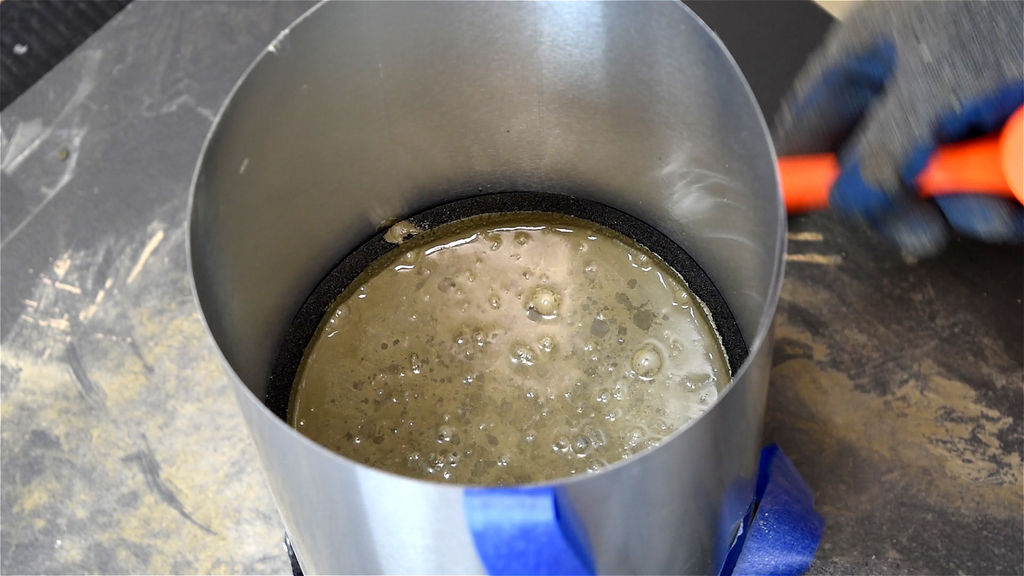
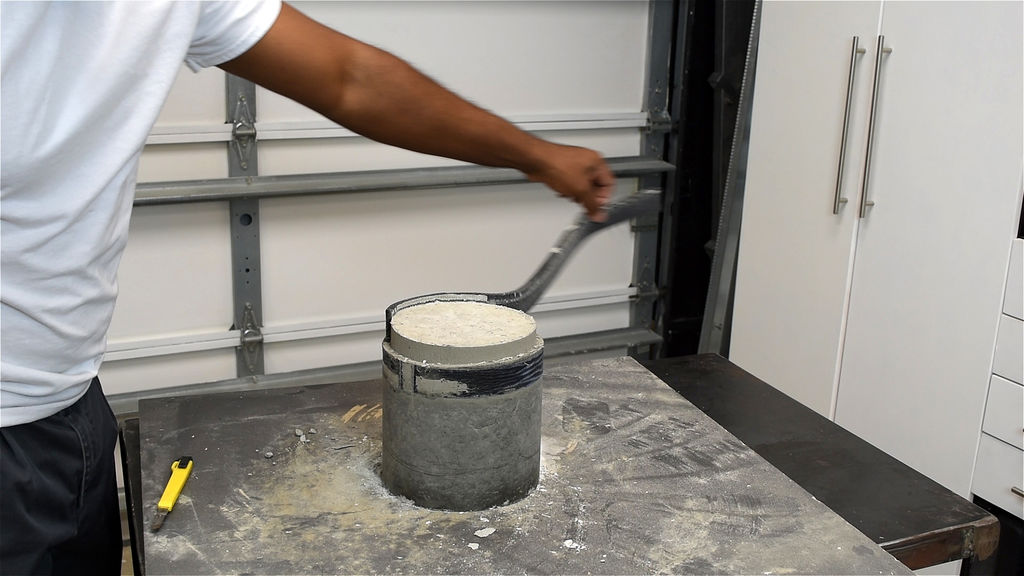
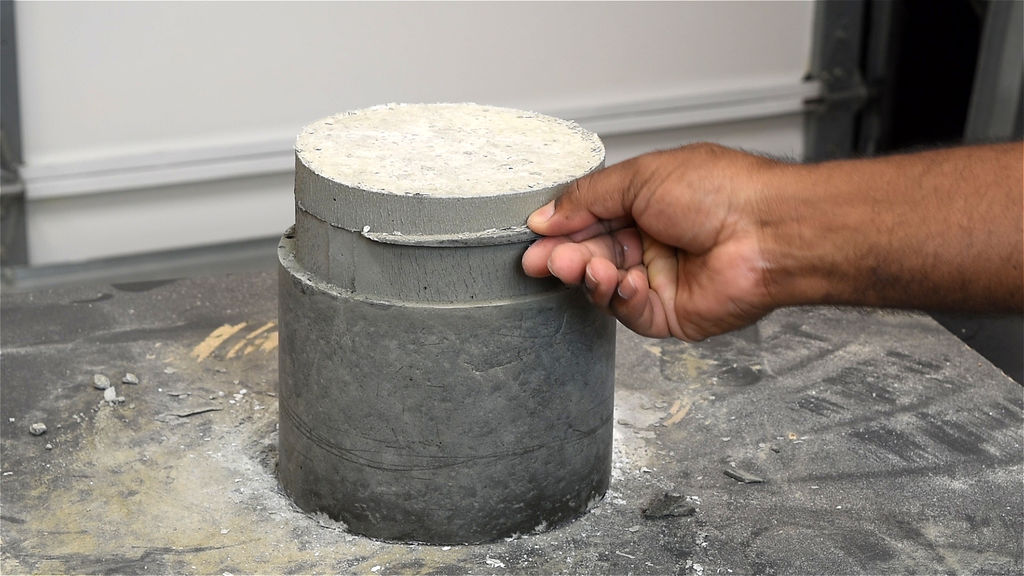

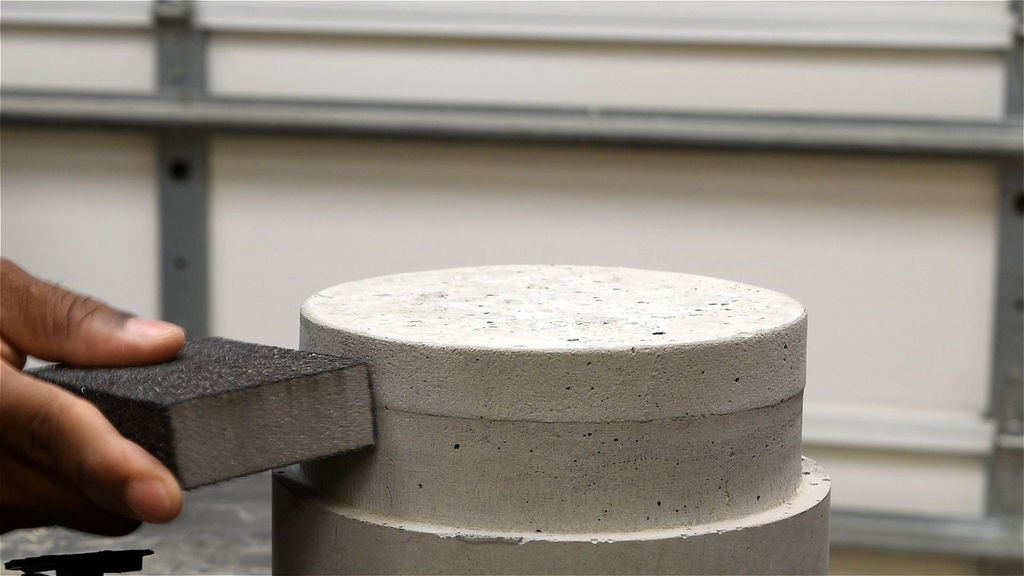
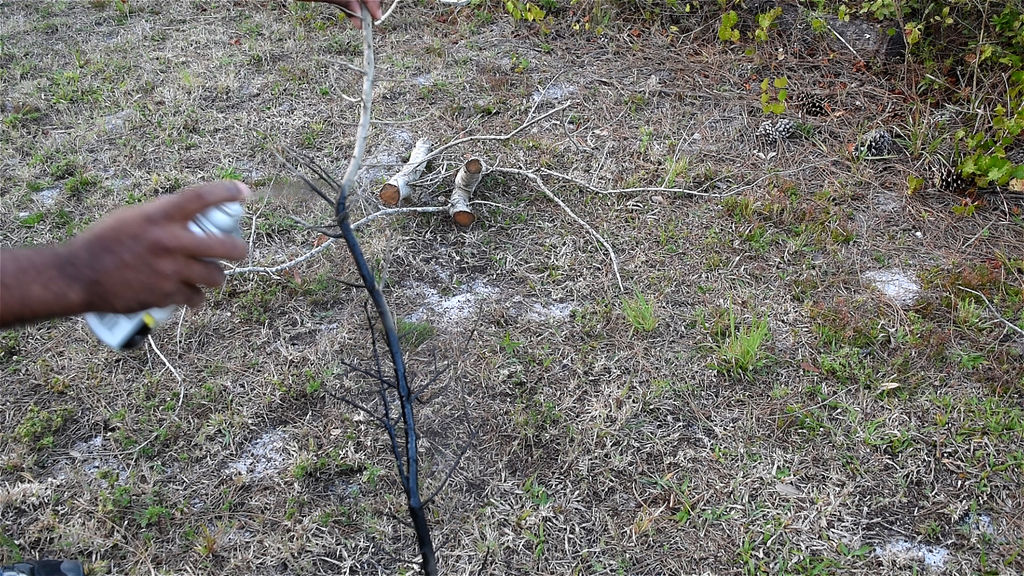
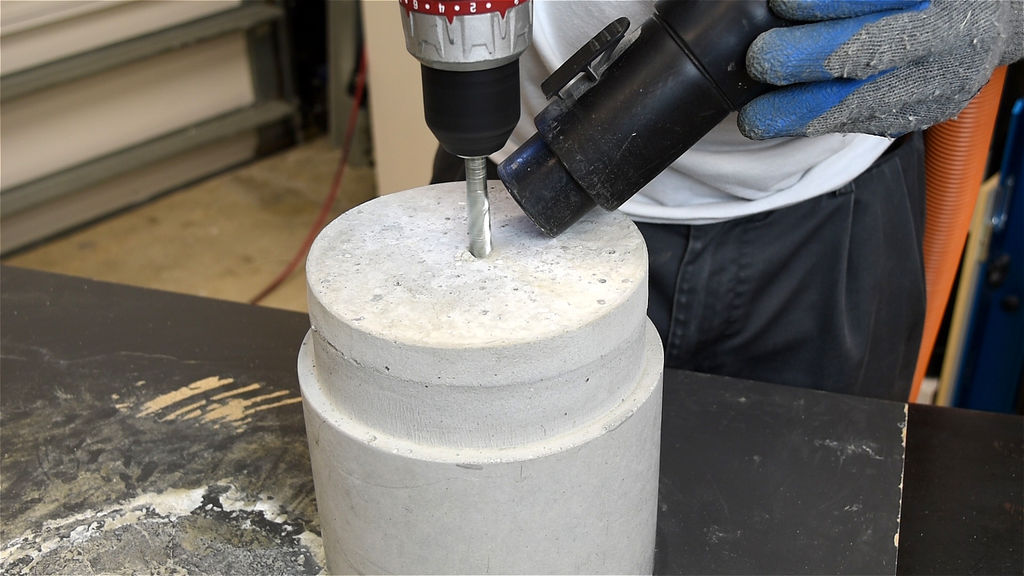
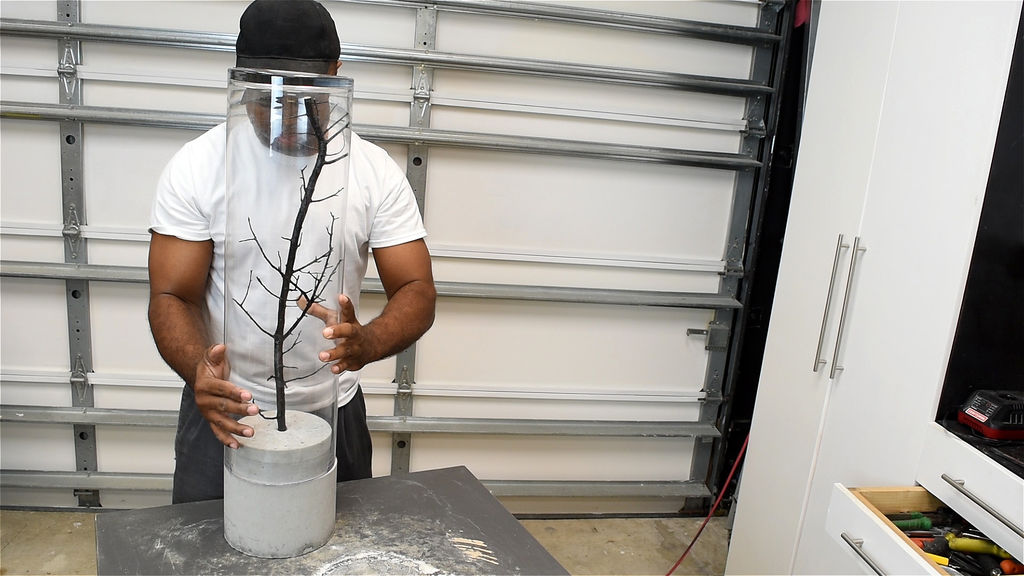
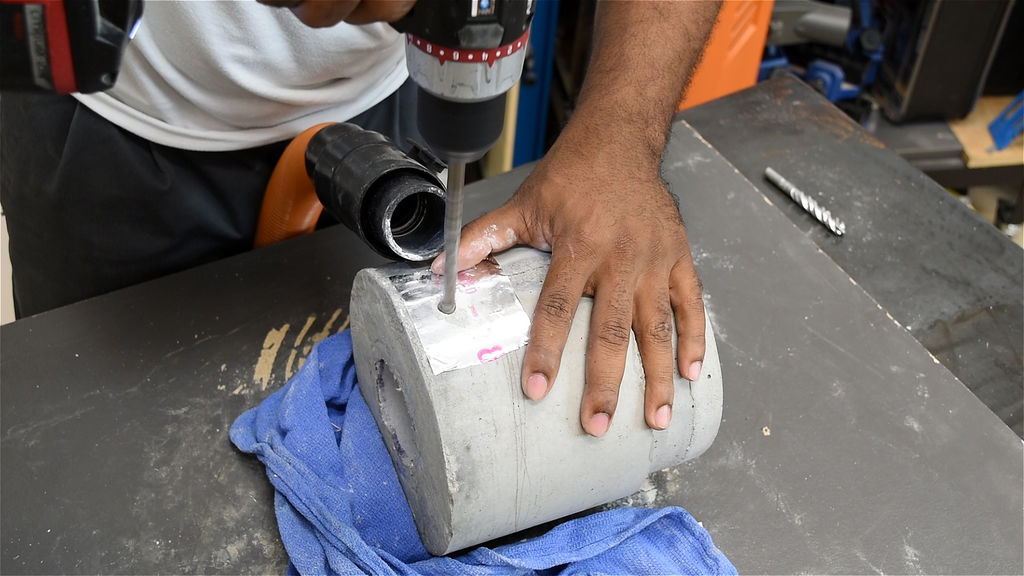
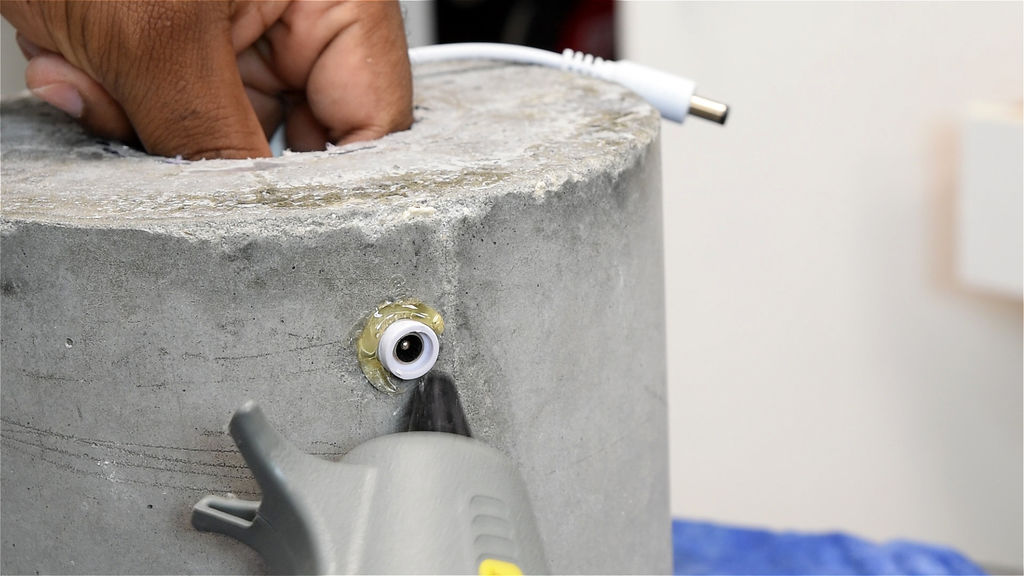
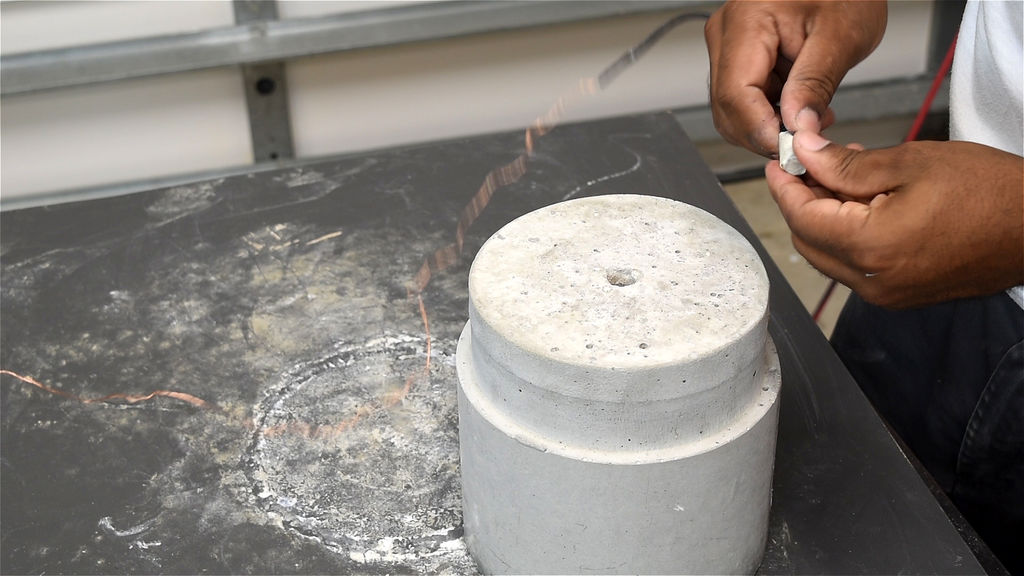
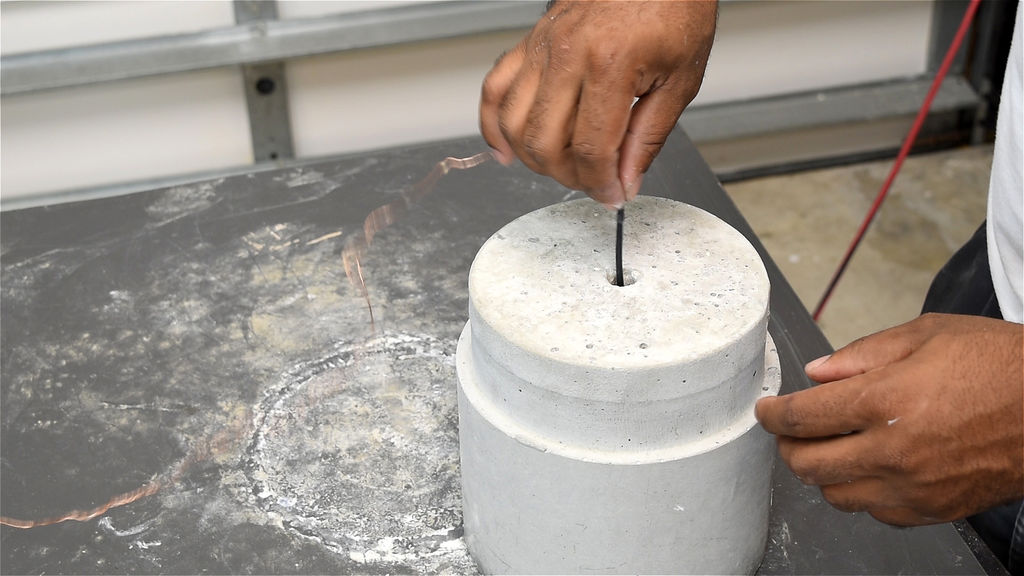
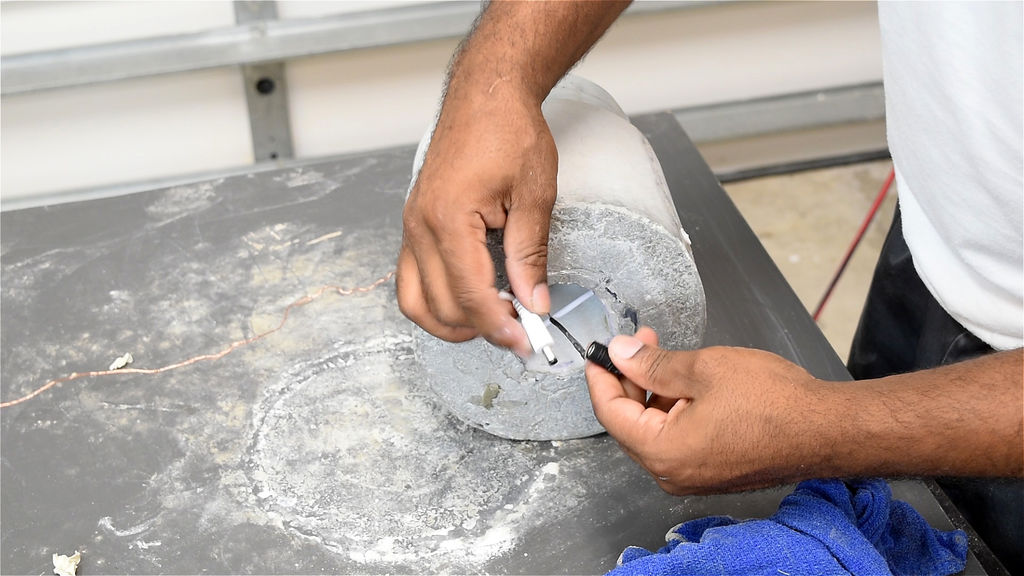
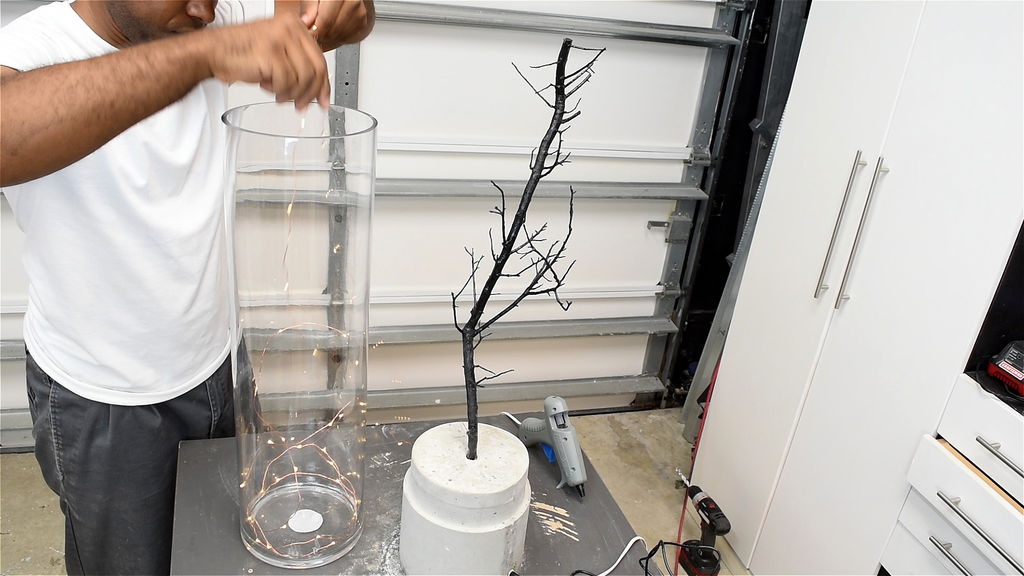
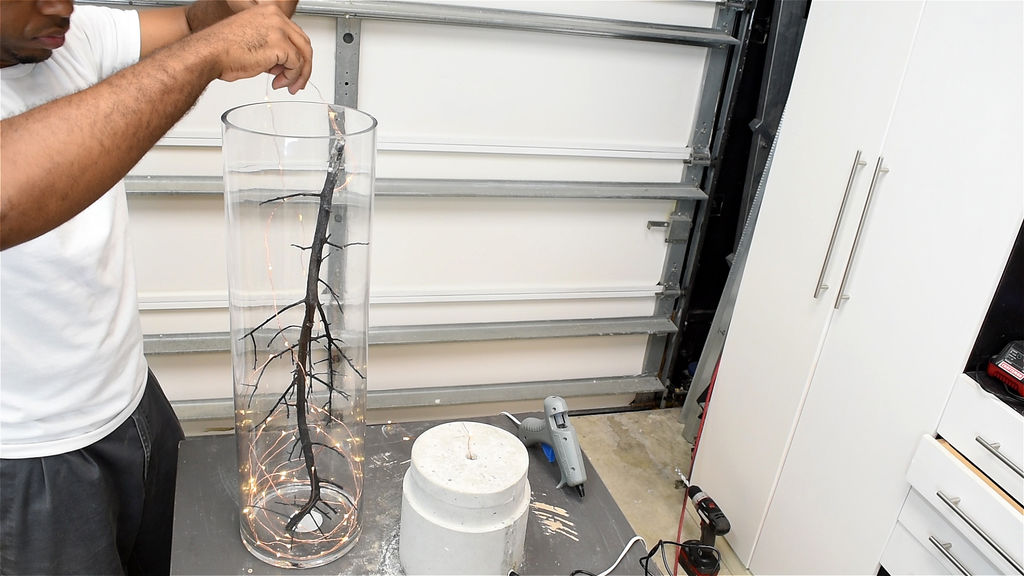

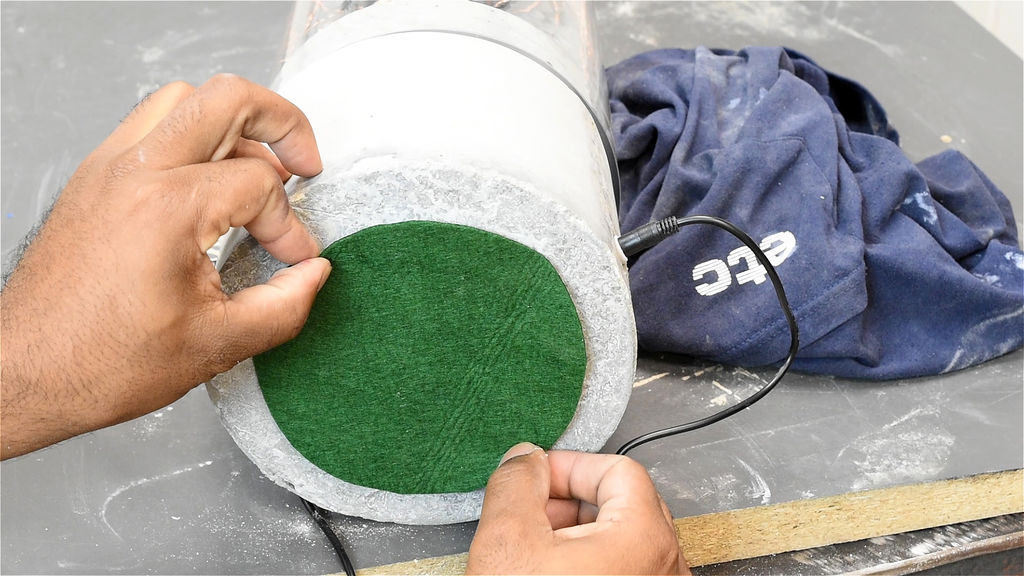
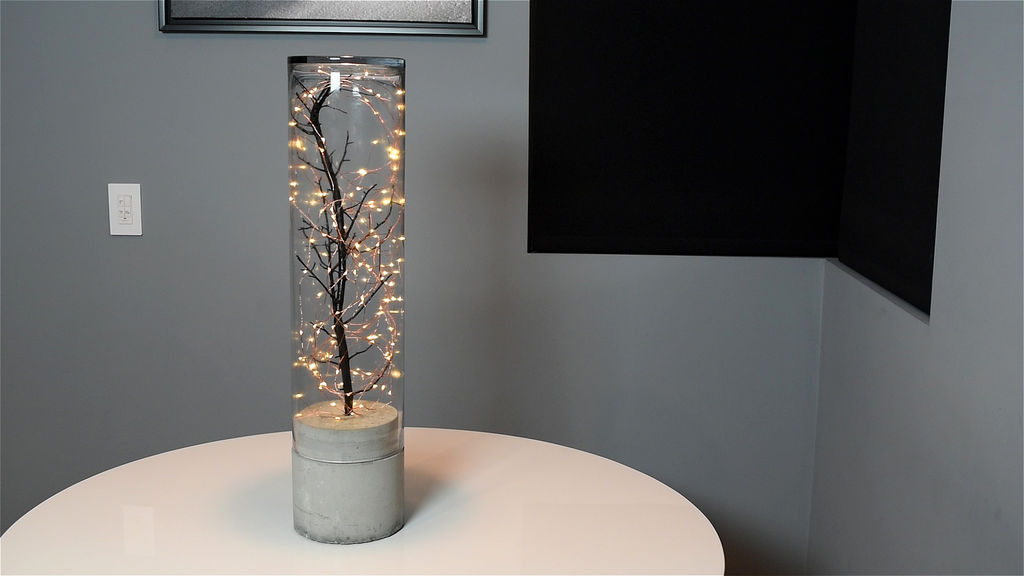
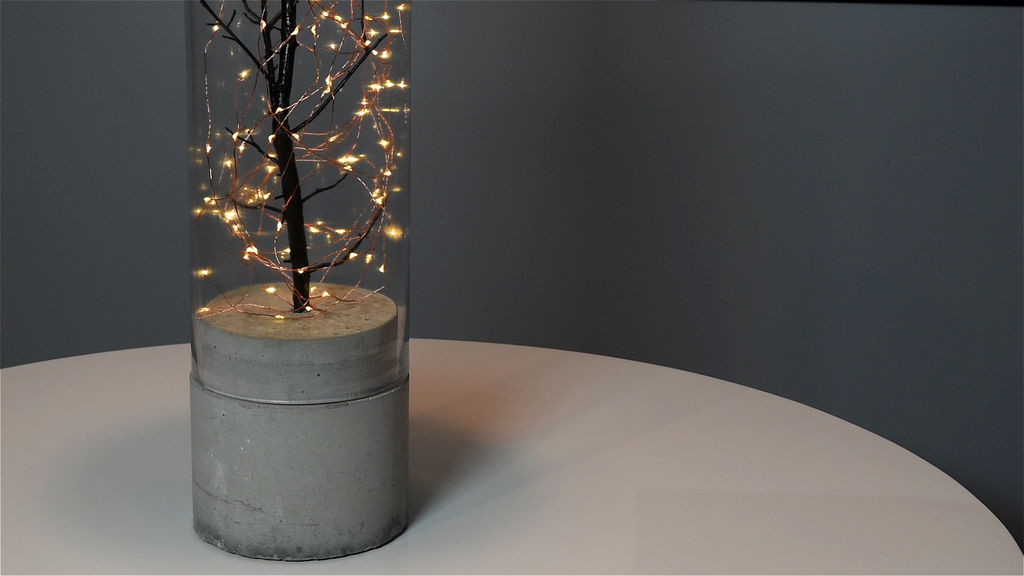
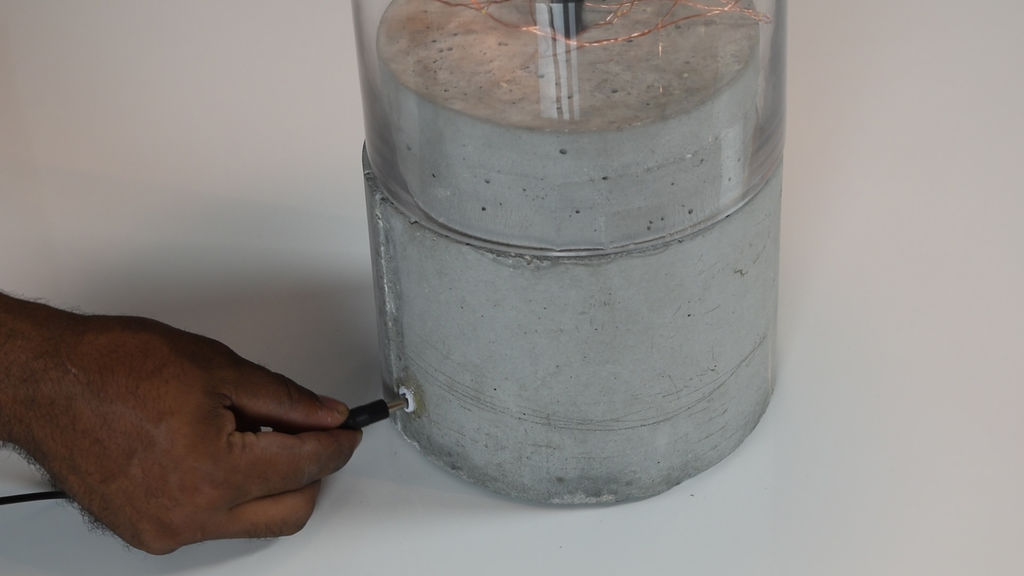
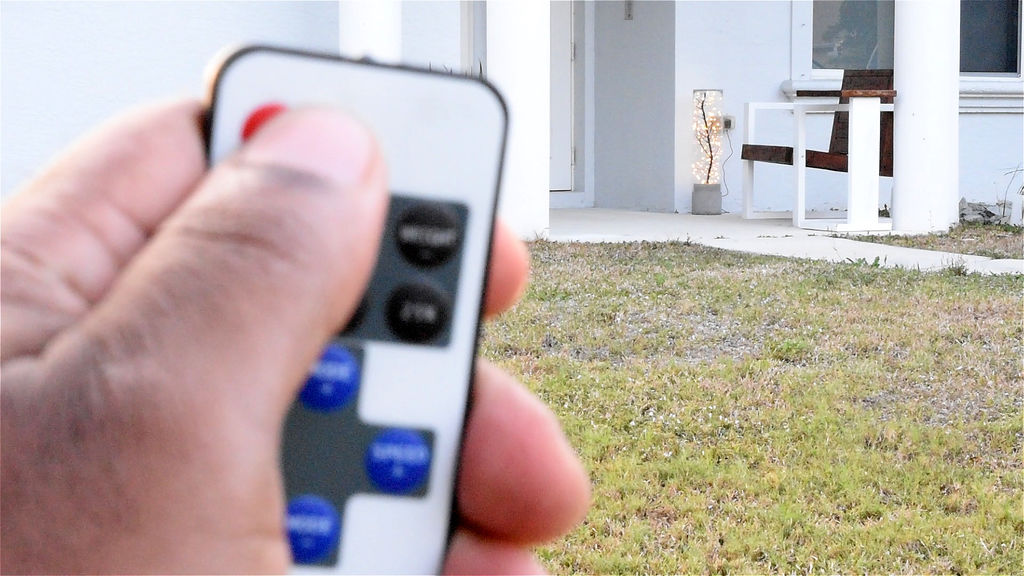
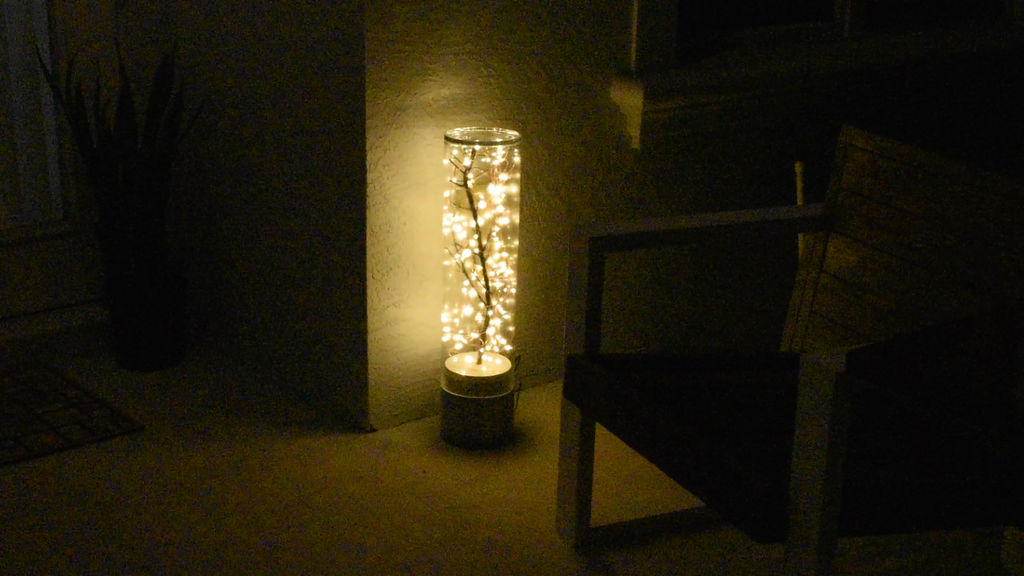
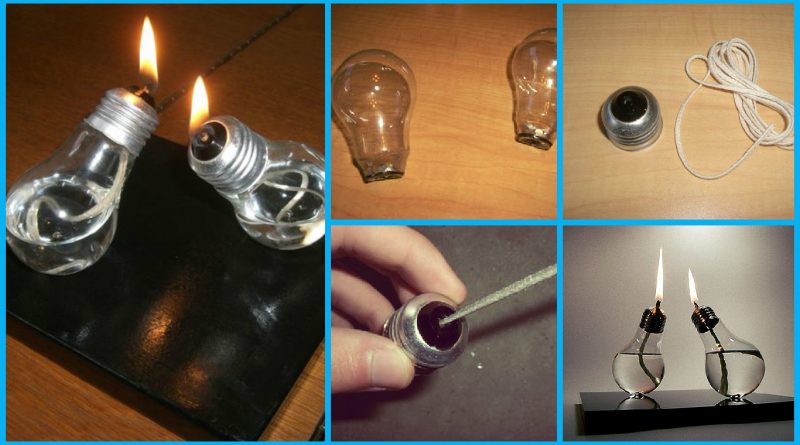
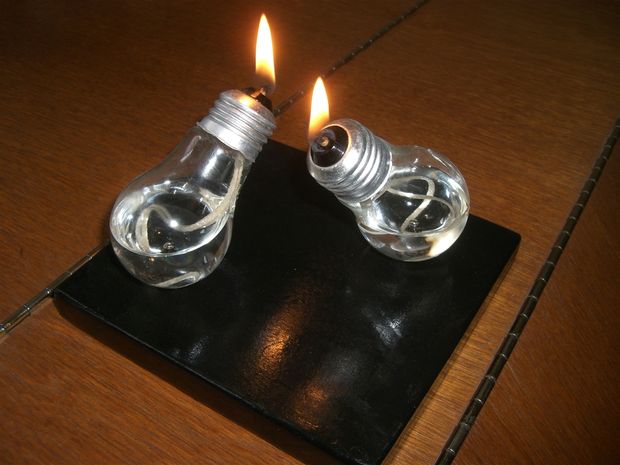
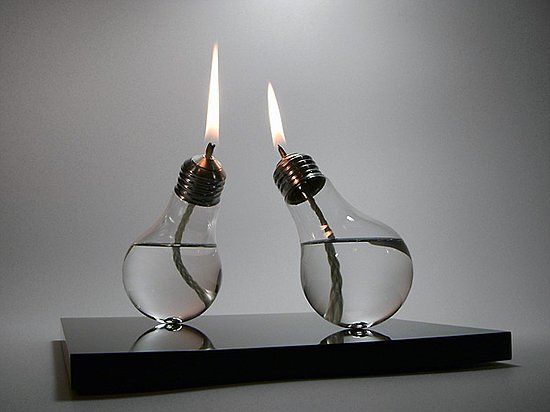
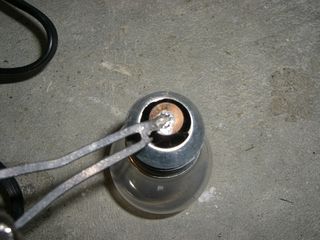
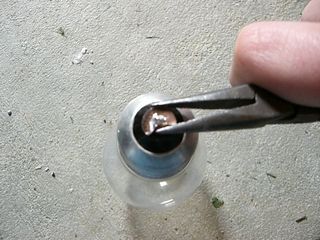

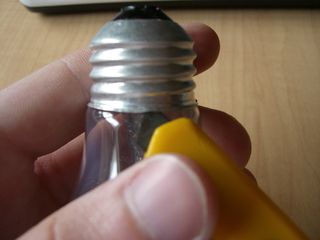

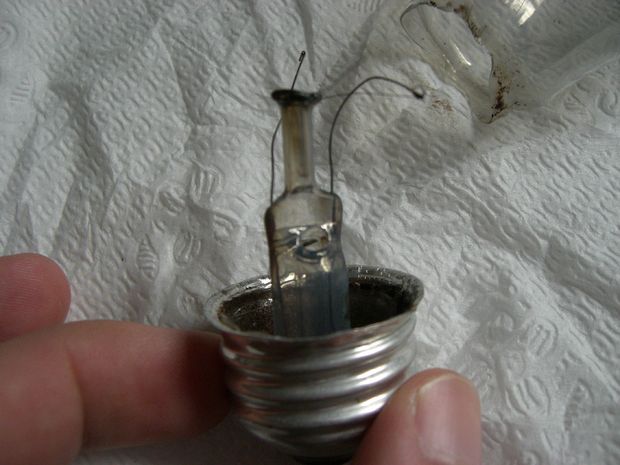
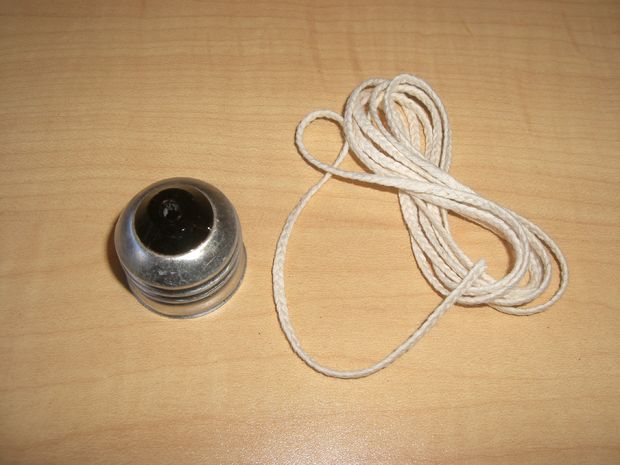
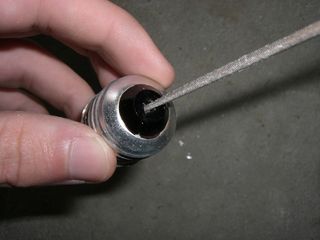
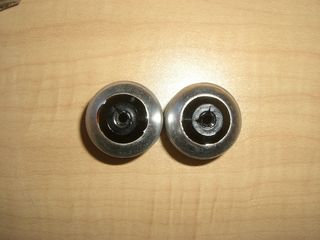
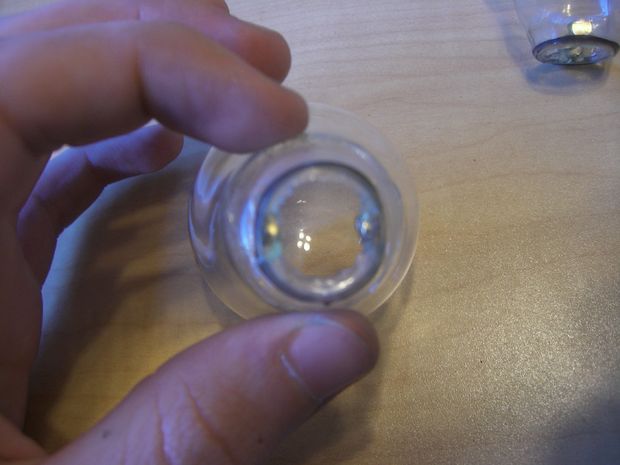

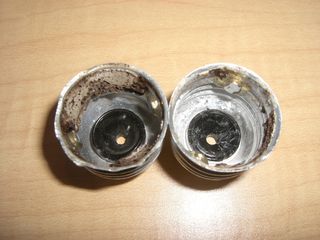

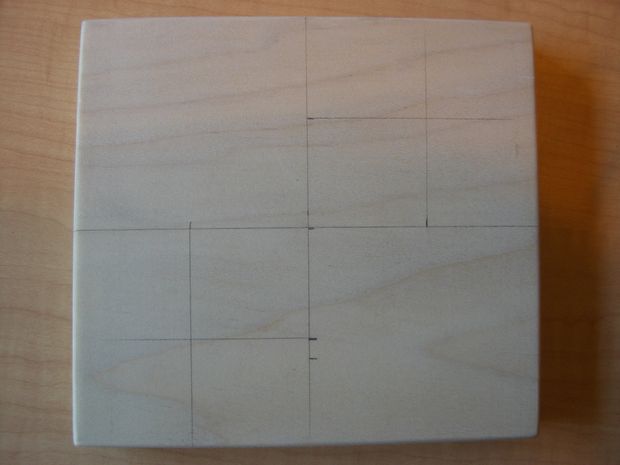
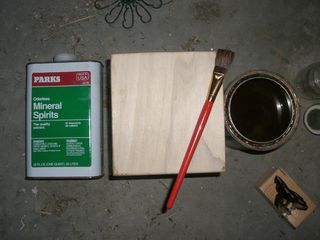
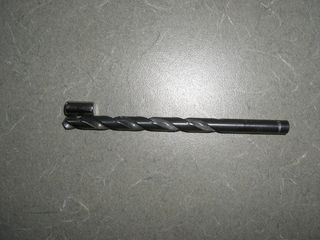

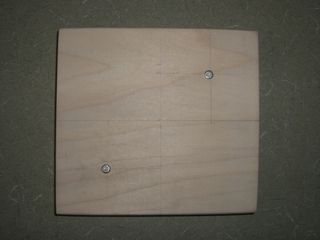

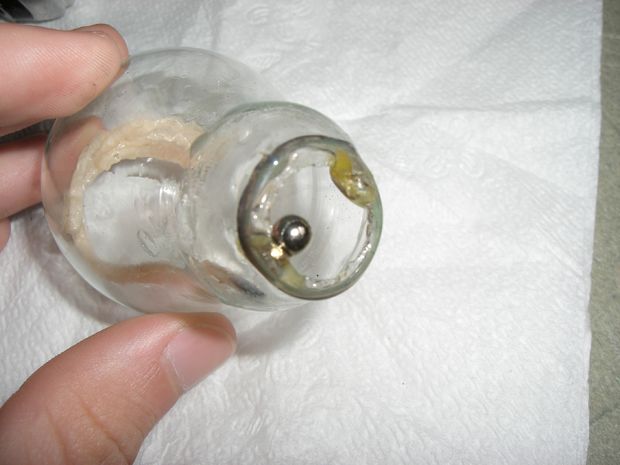

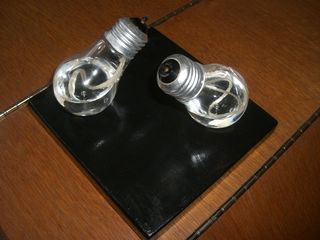





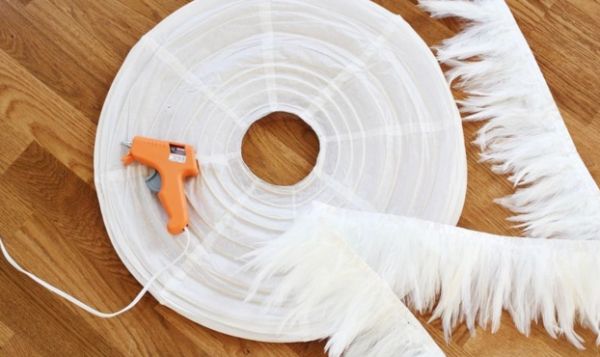 Then, apply a dab of hot glue near the edge of the bottom of your lamp of rice paper. Then position the tip of the cord down on the glue and start to stick the cord around the entire edge of a rice paper lamp, but letting the foot down, to make a good finish at the end of their work. Follow pasting your down cord around the bottom edge of your paper lamp rice, making layers of tightly closed and filled with feathers, not to let a glimpse of the color of your light fixture rice paper.
Then, apply a dab of hot glue near the edge of the bottom of your lamp of rice paper. Then position the tip of the cord down on the glue and start to stick the cord around the entire edge of a rice paper lamp, but letting the foot down, to make a good finish at the end of their work. Follow pasting your down cord around the bottom edge of your paper lamp rice, making layers of tightly closed and filled with feathers, not to let a glimpse of the color of your light fixture rice paper. Soon after, follow pasting down cord around his rice paper lamp, well-filled way. When coming to the end, paste the cord down even more carefully, to make a good finish in his play.
Soon after, follow pasting down cord around his rice paper lamp, well-filled way. When coming to the end, paste the cord down even more carefully, to make a good finish in his play. Now, to complete your customization lamp, finish paste the feather cord around the top edge of a rice paper lamp, cut the tip and glue the end doing a good finish. And you are done!
Now, to complete your customization lamp, finish paste the feather cord around the top edge of a rice paper lamp, cut the tip and glue the end doing a good finish. And you are done!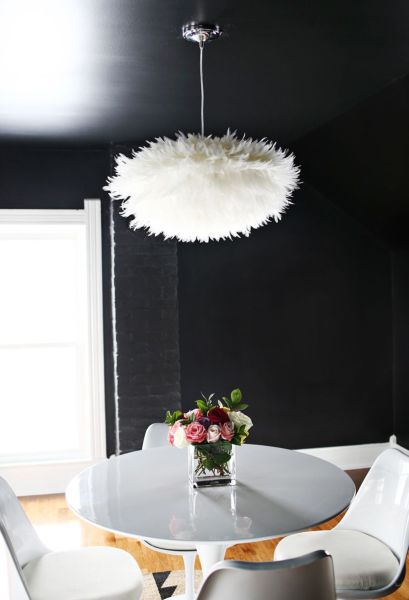

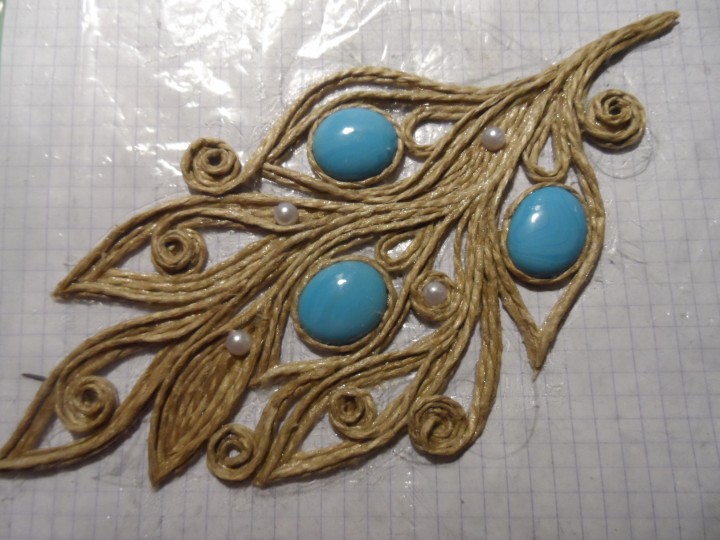 Hello, dear friends! Yesterday finished work on the new lights. I hasten to share the result. To use the base of the bottle of blue glass. Lampshades made of using his technique “Jute filigree”. did not. A lampshade in the shape of a hemisphere gathered on the form (flower pot) made separately from the branches. I did not know how things will turn out. Between the branches were gaps closed and connected the composition in the process of the various elements in the form of curls and leaves. The result had been the same for quite solid shade without gaps. The base was decorated with the same branches and curls of jute, Marbles, and pearls. Another lamp with a four-sided shade. In working with him, I also use a bleached jute (the idea came to whiten the rope in the process). Received an unusual, even more interesting, in my opinion. The composition is three-dimensional. The base also graced the simple and bleached jute, Marbles and contour on the glass. To use the backlight LED tape. It is safe and bright.
Hello, dear friends! Yesterday finished work on the new lights. I hasten to share the result. To use the base of the bottle of blue glass. Lampshades made of using his technique “Jute filigree”. did not. A lampshade in the shape of a hemisphere gathered on the form (flower pot) made separately from the branches. I did not know how things will turn out. Between the branches were gaps closed and connected the composition in the process of the various elements in the form of curls and leaves. The result had been the same for quite solid shade without gaps. The base was decorated with the same branches and curls of jute, Marbles, and pearls. Another lamp with a four-sided shade. In working with him, I also use a bleached jute (the idea came to whiten the rope in the process). Received an unusual, even more interesting, in my opinion. The composition is three-dimensional. The base also graced the simple and bleached jute, Marbles and contour on the glass. To use the backlight LED tape. It is safe and bright. Movement is.
Movement is. The cap is almost ready.
The cap is almost ready.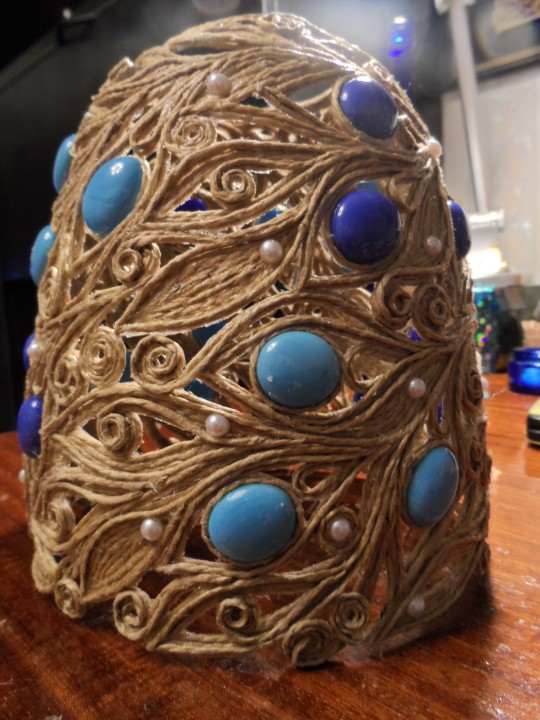
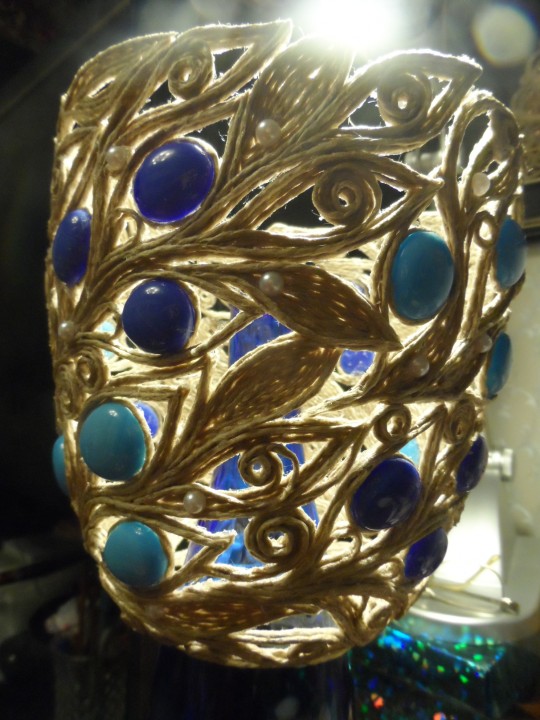
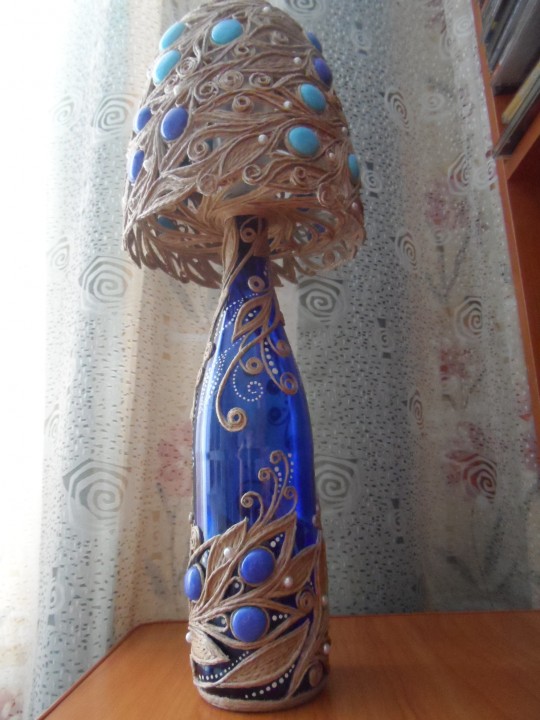

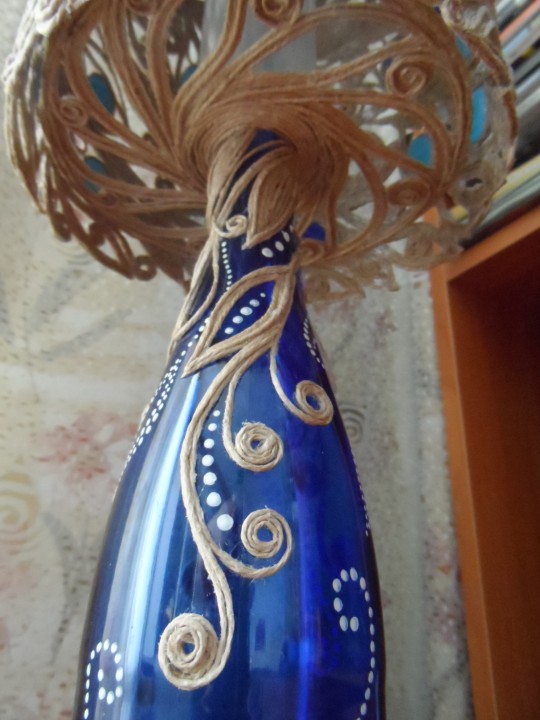
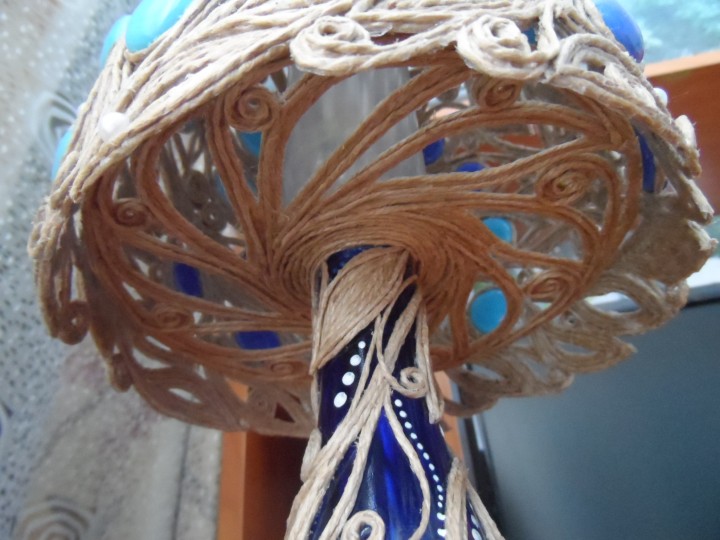
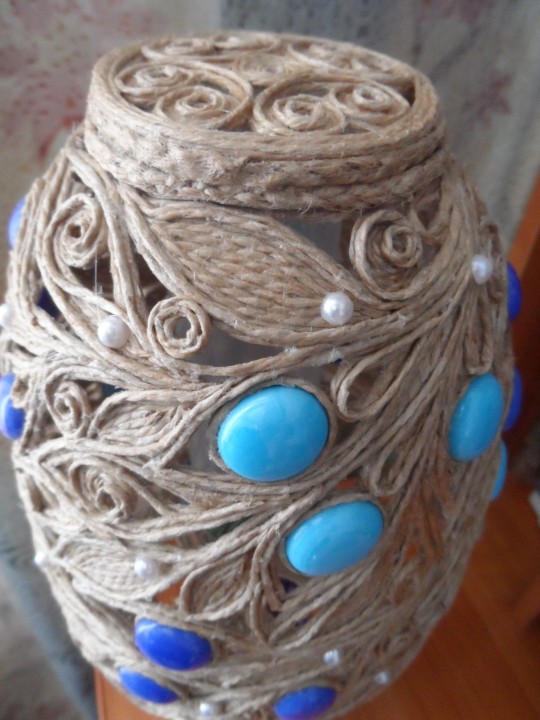
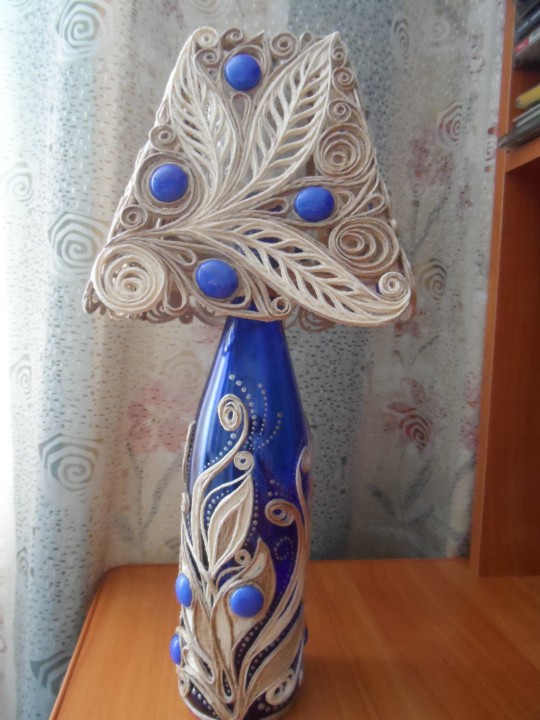
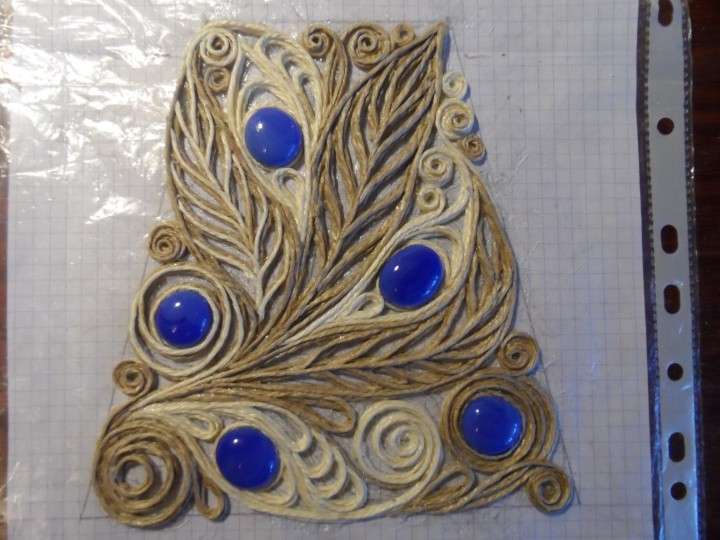


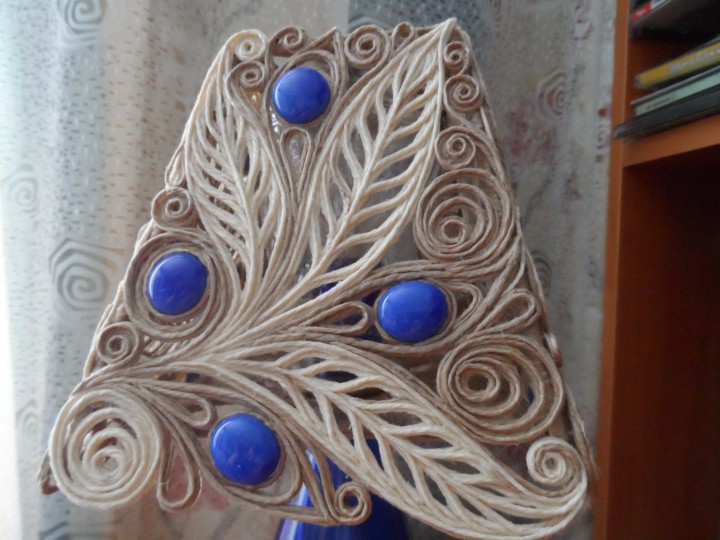
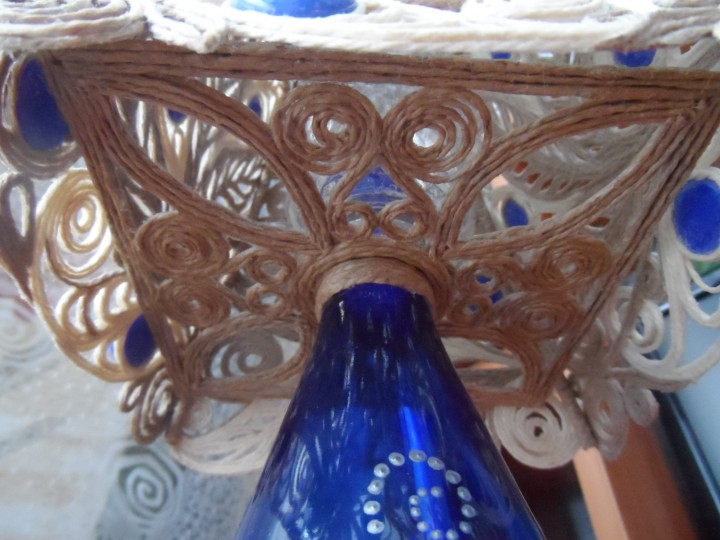
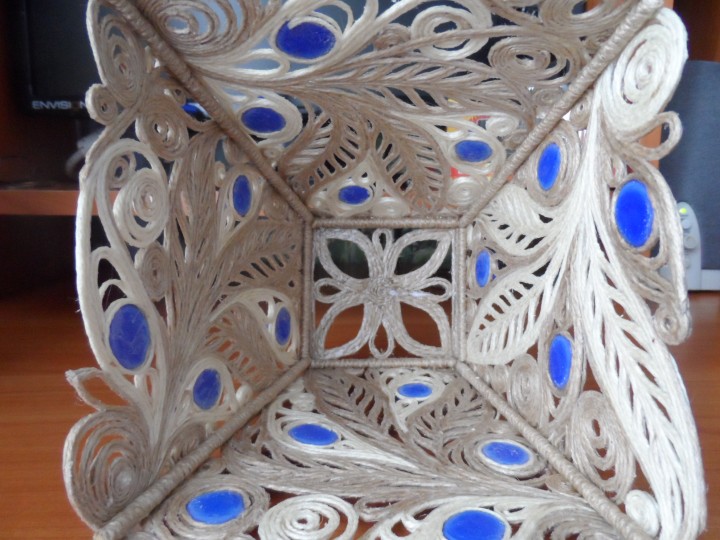
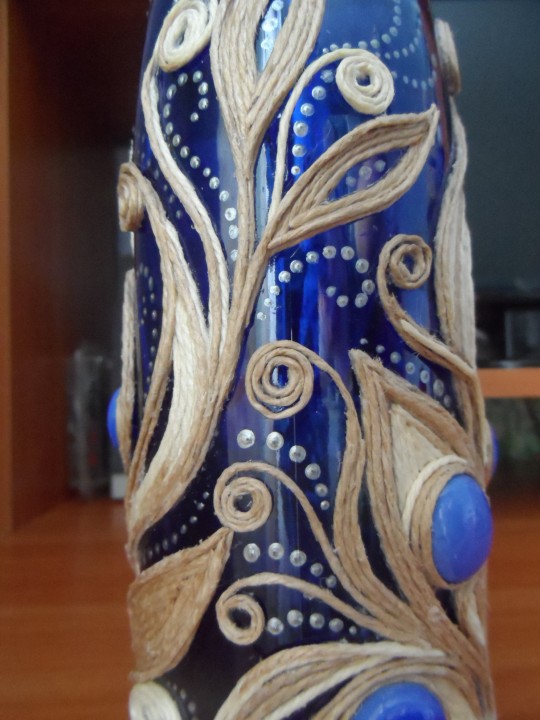
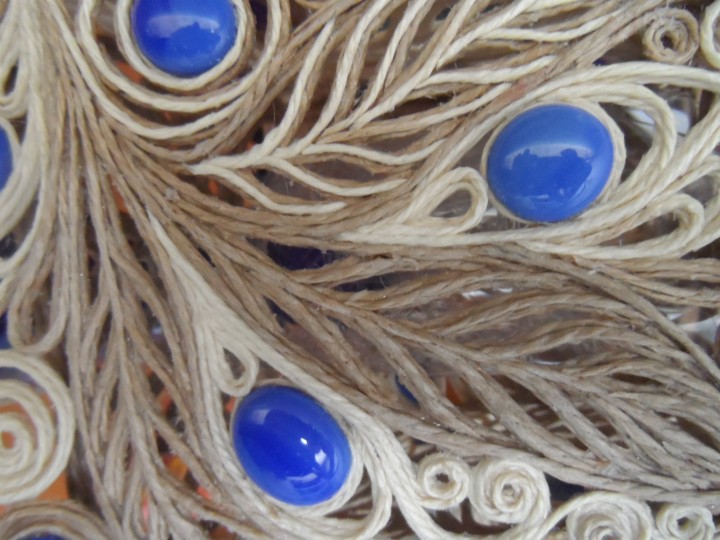
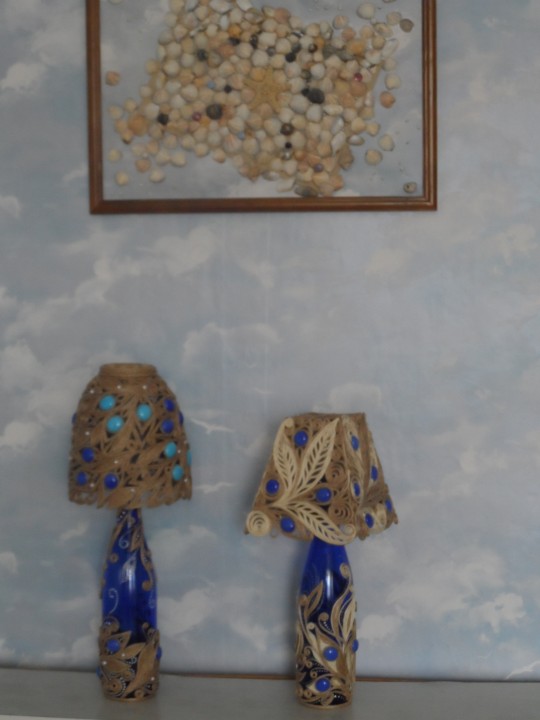 Third still in operation.
Third still in operation.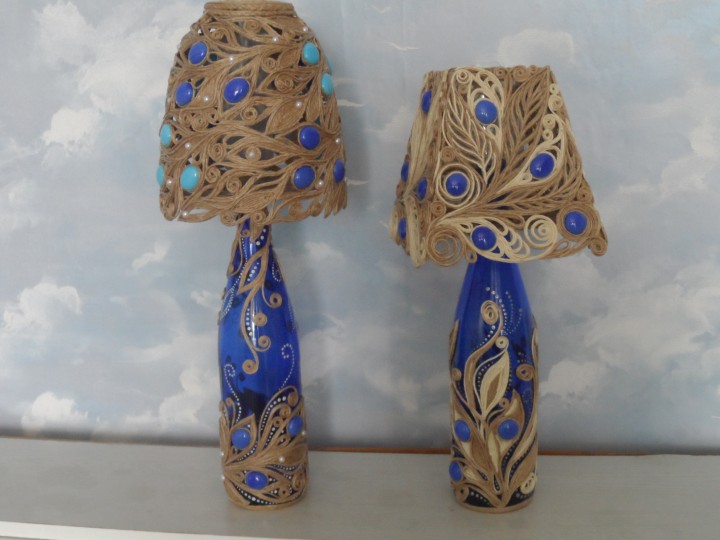 This is normal and bleached jute.
This is normal and bleached jute.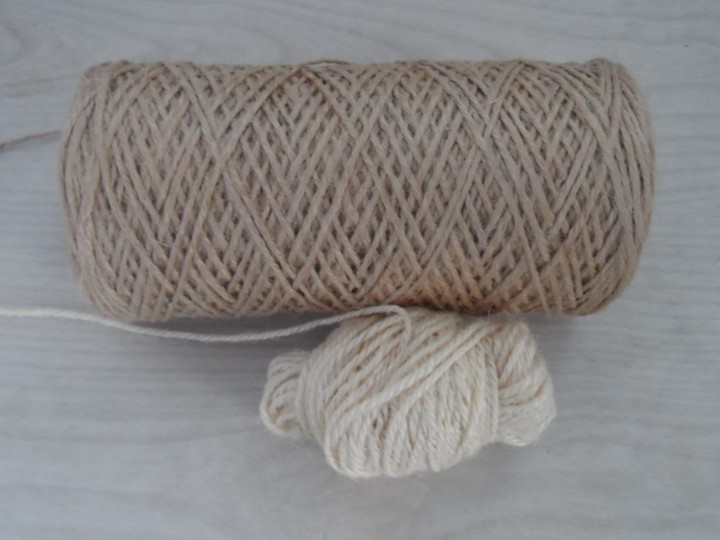 This is also a jute. I experimented with painting with acrylics.
This is also a jute. I experimented with painting with acrylics.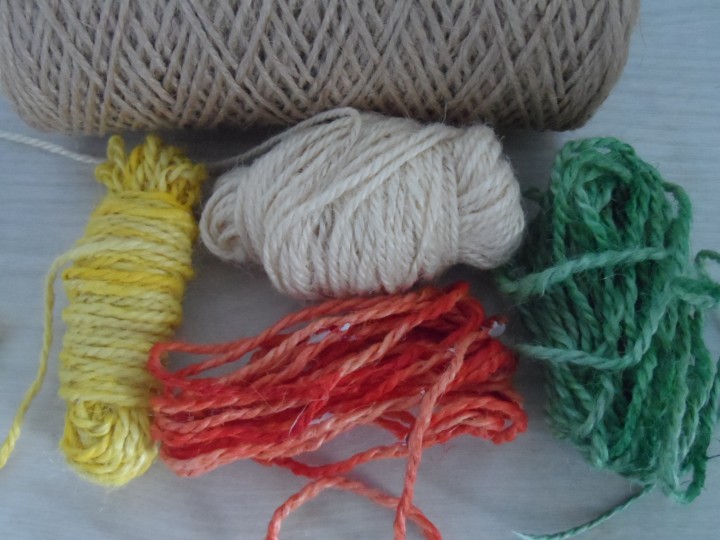
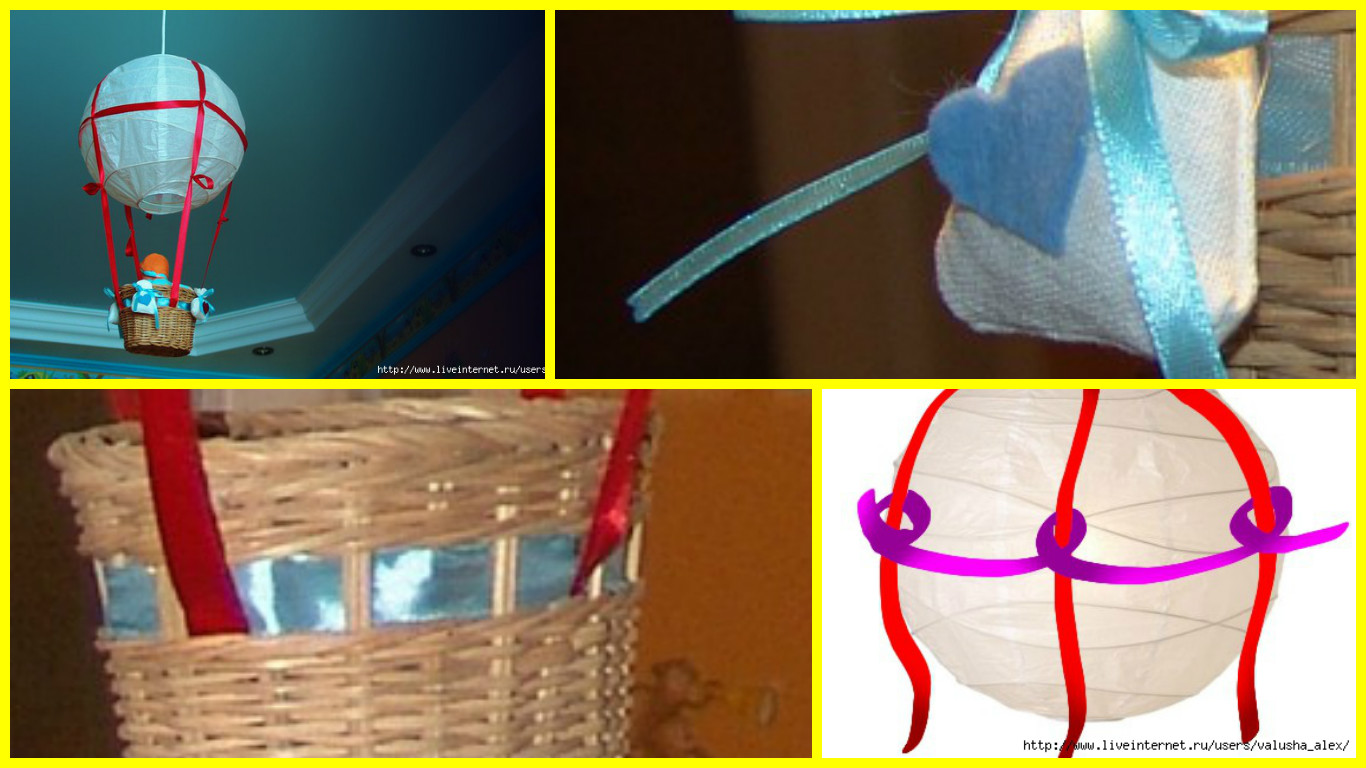

 2. Bags: fabric cut into 4 rectangles 12×5 cm – and sew them from plain bags under the scheme:
2. Bags: fabric cut into 4 rectangles 12×5 cm – and sew them from plain bags under the scheme: Once the bags are sewn, fill them with filler (wool or pieces of fabric). Slicing thin turquoise ribbon into equal segments always burns the tips of using matches and tying the bags on the bow. Then, cut out of felt 4 freeform heart for every heart the color of felt. Hearts glued to the finished pouches using the glue gun. Something like this, you should get:
Once the bags are sewn, fill them with filler (wool or pieces of fabric). Slicing thin turquoise ribbon into equal segments always burns the tips of using matches and tying the bags on the bow. Then, cut out of felt 4 freeform heart for every heart the color of felt. Hearts glued to the finished pouches using the glue gun. Something like this, you should get: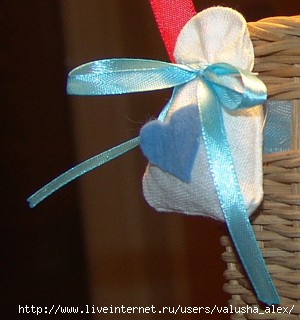
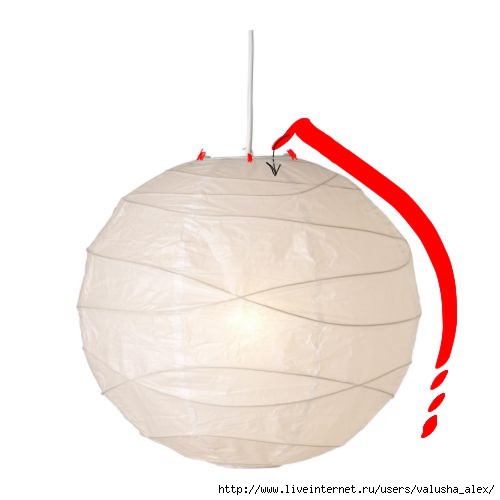
 On the ground, with vertical ribbons crossing do nodules, nodules will be 4:
On the ground, with vertical ribbons crossing do nodules, nodules will be 4: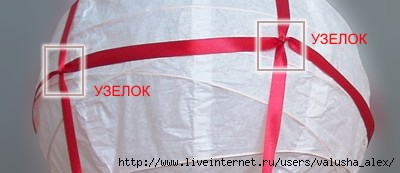

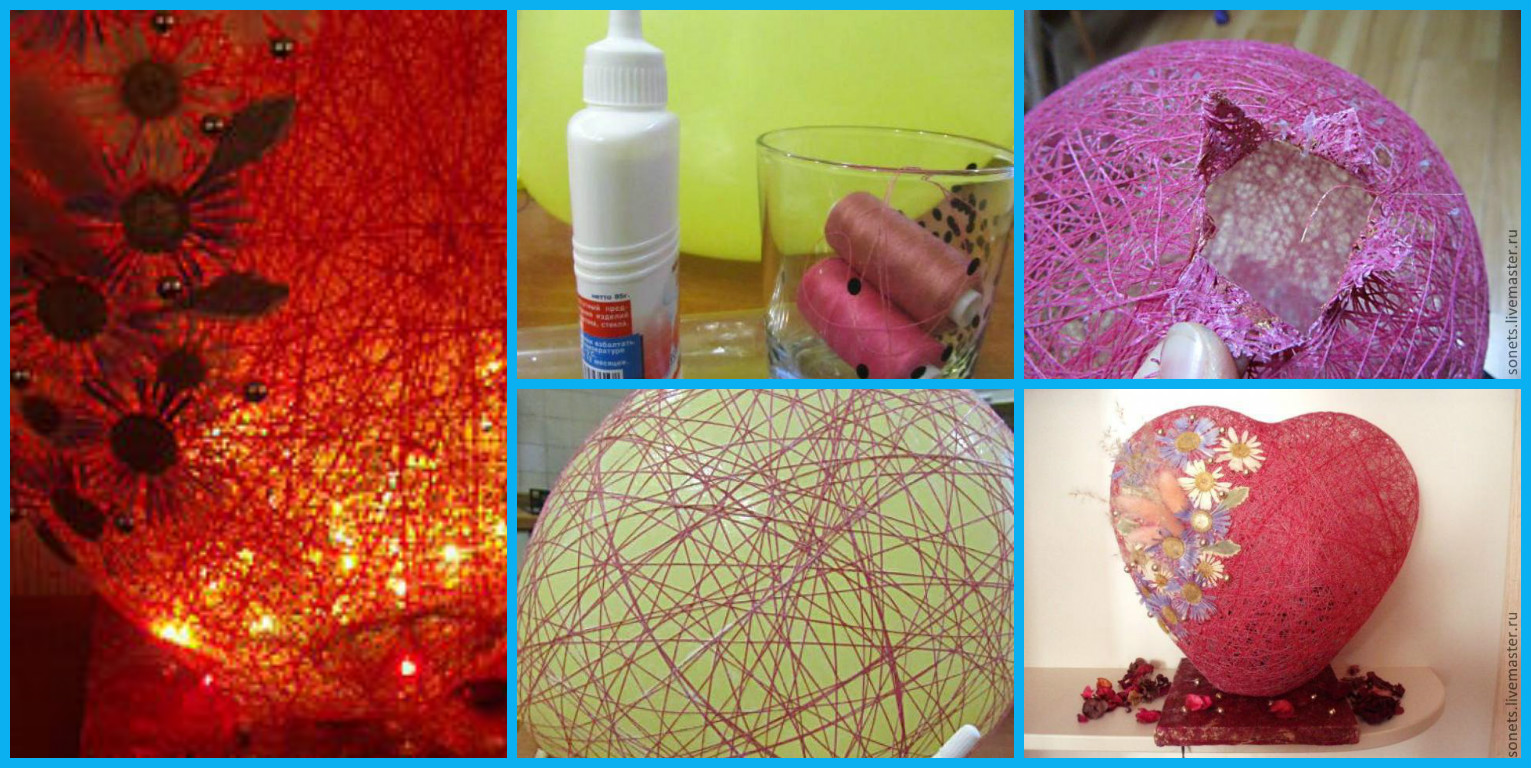
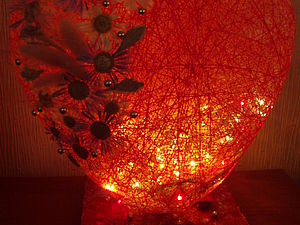
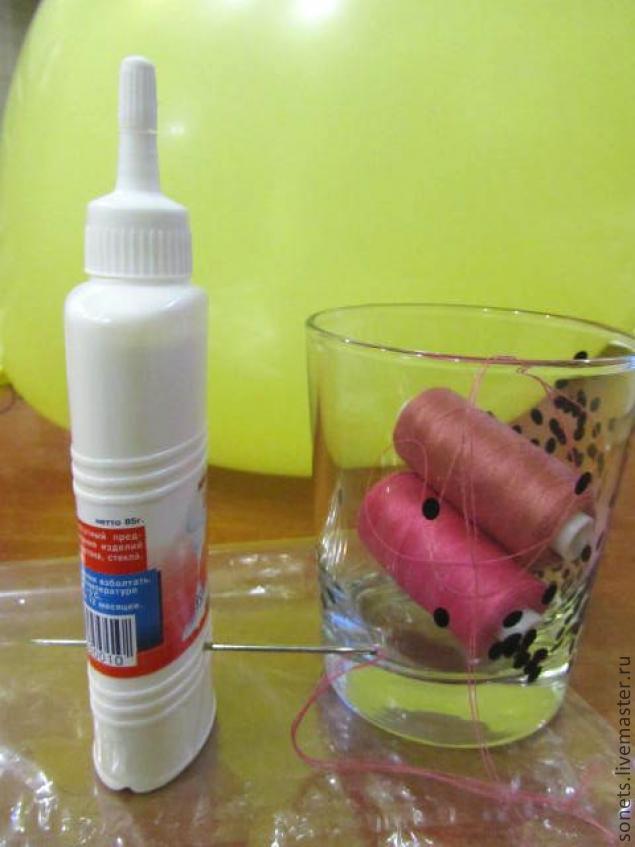
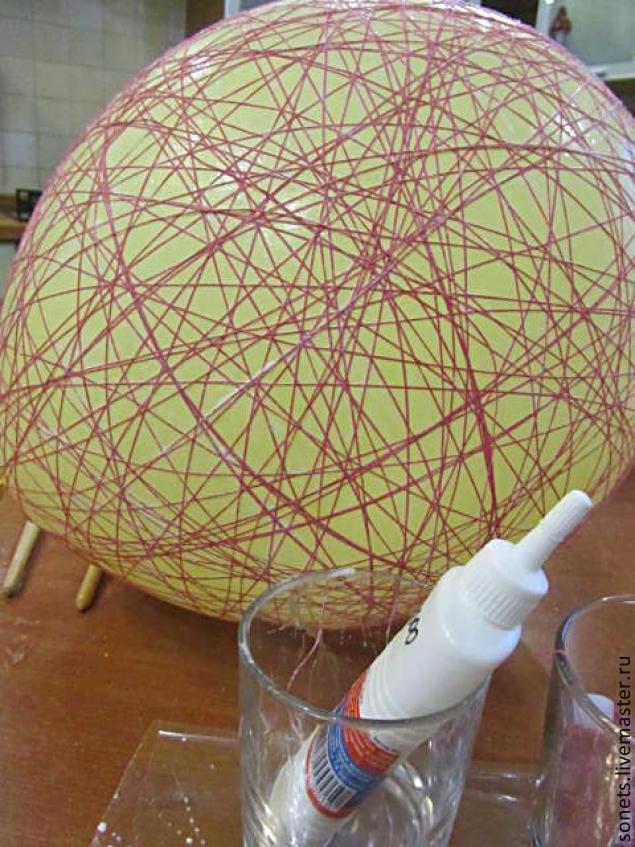 Fig. 2). The thread must always be wetted with adhesive. Initially, it will be inconvenient and thread all the time to slip the ball, but we’re stubborn, hard-working, we will succeed!
Fig. 2). The thread must always be wetted with adhesive. Initially, it will be inconvenient and thread all the time to slip the ball, but we’re stubborn, hard-working, we will succeed!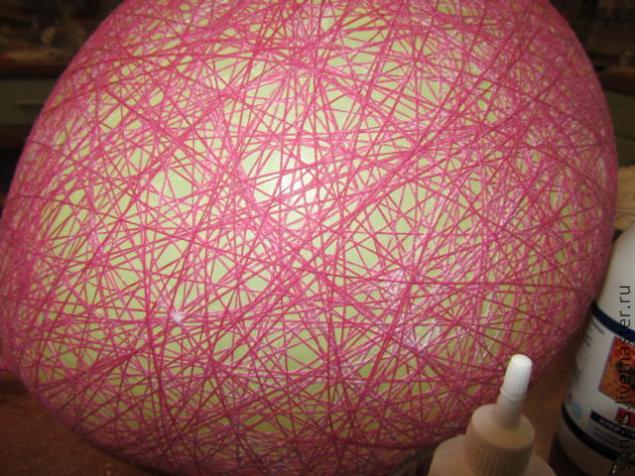
 5 over the aperture ring of glue cardboard, cut from of roll of toilet paper. We attach it with glue well bay. Outside strengthen a strip of paper, grabbing one corner of the ring, the other coming on board. The board. I pasted cloth (PVA) and a bit overshadowed gold acrylic paint. (Figure 7 and Fig. 8 and Fig. 9).
5 over the aperture ring of glue cardboard, cut from of roll of toilet paper. We attach it with glue well bay. Outside strengthen a strip of paper, grabbing one corner of the ring, the other coming on board. The board. I pasted cloth (PVA) and a bit overshadowed gold acrylic paint. (Figure 7 and Fig. 8 and Fig. 9).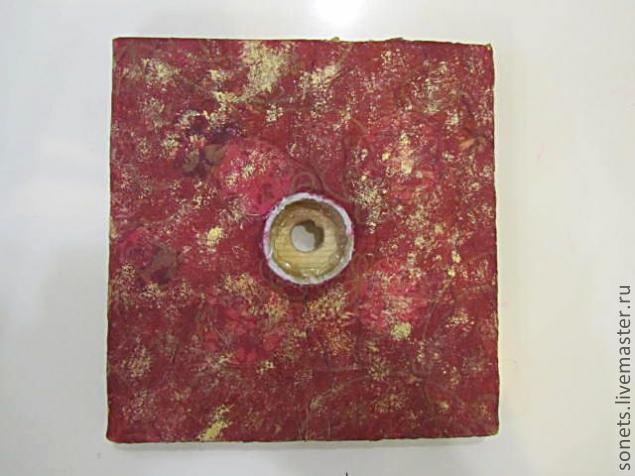 On the reverse side, plates make a groove for the wiring from a garland (Fig. 10)
On the reverse side, plates make a groove for the wiring from a garland (Fig. 10) 6 Threads almost dried up? Punctures the ball. The ball should unstick itself from the thread. Therefore, it is not necessary to wait until dry. If the ball has dried thoroughly and piercing not unstuck from the thread, will come to his aid. Through the thread is passed a pencil or any wand inside her trying to unstick the ball. If the thread balloon wrinkled, pressed, then we, the same wand inside his straightened, but still try to do everything patiently and carefully. The ball was torn inside the thread. (Fig. 11)
6 Threads almost dried up? Punctures the ball. The ball should unstick itself from the thread. Therefore, it is not necessary to wait until dry. If the ball has dried thoroughly and piercing not unstuck from the thread, will come to his aid. Through the thread is passed a pencil or any wand inside her trying to unstick the ball. If the thread balloon wrinkled, pressed, then we, the same wand inside his straightened, but still try to do everything patiently and carefully. The ball was torn inside the thread. (Fig. 11)
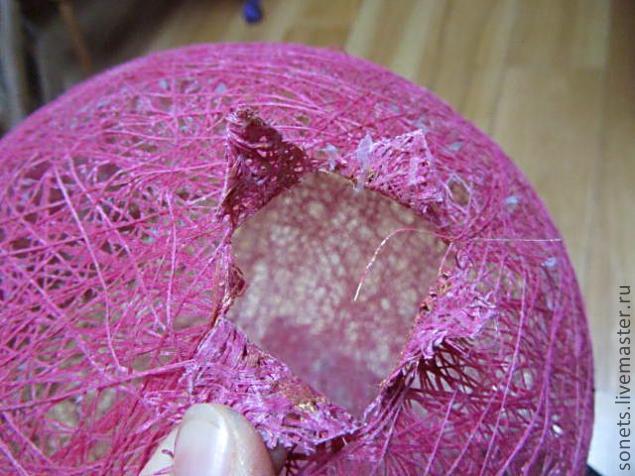 The hole diameter should be with our ring. And it sits on must be tight. (Figure 13).
The hole diameter should be with our ring. And it sits on must be tight. (Figure 13).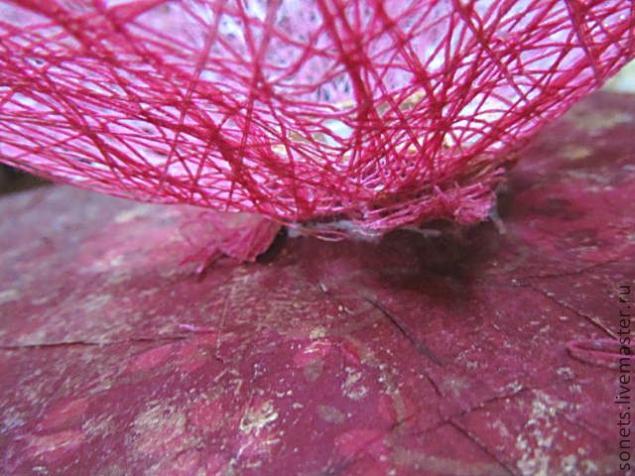 Dress up the ball on the ring, pouring glue. The petals are glued to the outside of the ring. Then you will feel that the ball as if he falls, and “asks” on the stand. Just press it and the place where he sat down on the stand we coat with glue. Just make sure that the lamp was flat, not tilted. (Fig. 14)
Dress up the ball on the ring, pouring glue. The petals are glued to the outside of the ring. Then you will feel that the ball as if he falls, and “asks” on the stand. Just press it and the place where he sat down on the stand we coat with glue. Just make sure that the lamp was flat, not tilted. (Fig. 14)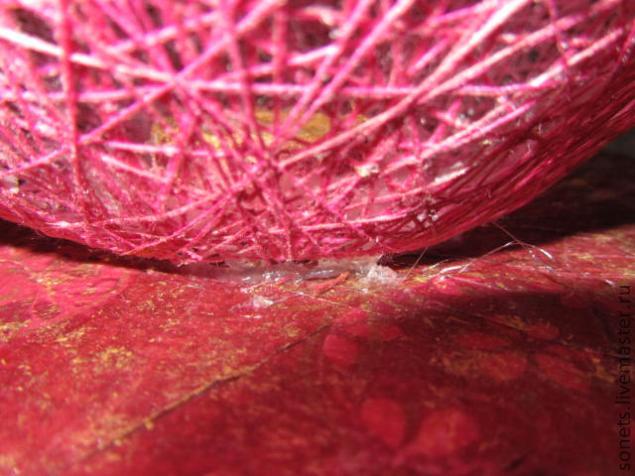 8 Zadekoriruem our “Heart” (in our version, to explain the ball.) I used dried flowers. But you can come up with something of their own. Stick to your decor thread, make “heart” of the most beautiful and loving. (Fig. 15)
8 Zadekoriruem our “Heart” (in our version, to explain the ball.) I used dried flowers. But you can come up with something of their own. Stick to your decor thread, make “heart” of the most beautiful and loving. (Fig. 15)
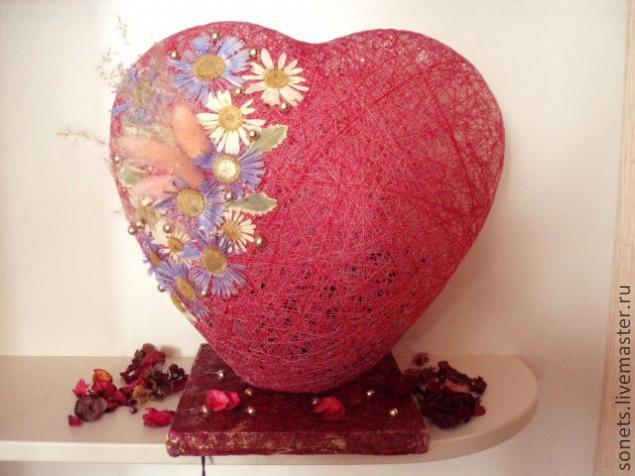 9 Bottom stand pokes through a hole in the “heart” of Christmas garland. Outside the reserve wire that embarks on the groove and attaches it with glue or adhesive tape.
9 Bottom stand pokes through a hole in the “heart” of Christmas garland. Outside the reserve wire that embarks on the groove and attaches it with glue or adhesive tape.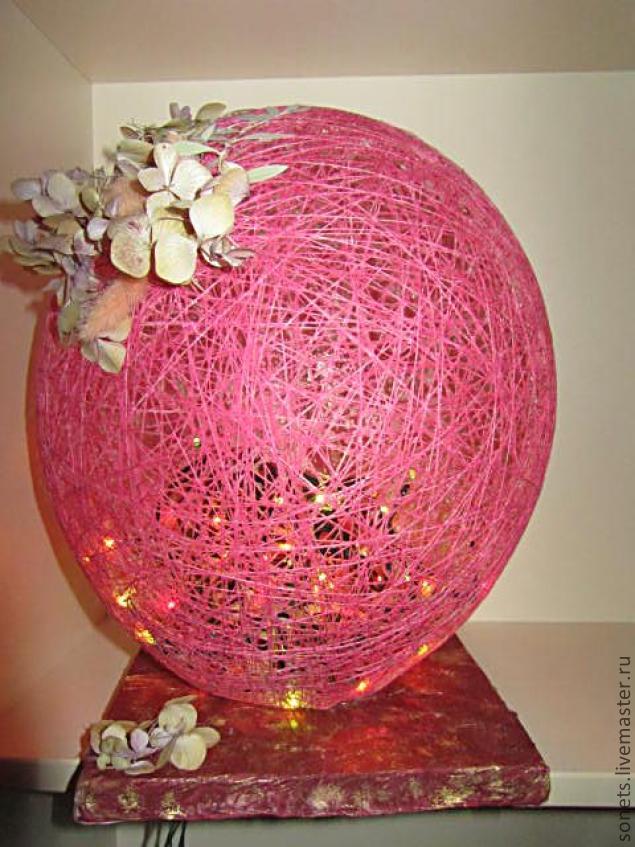 Enjoy your evening
Enjoy your evening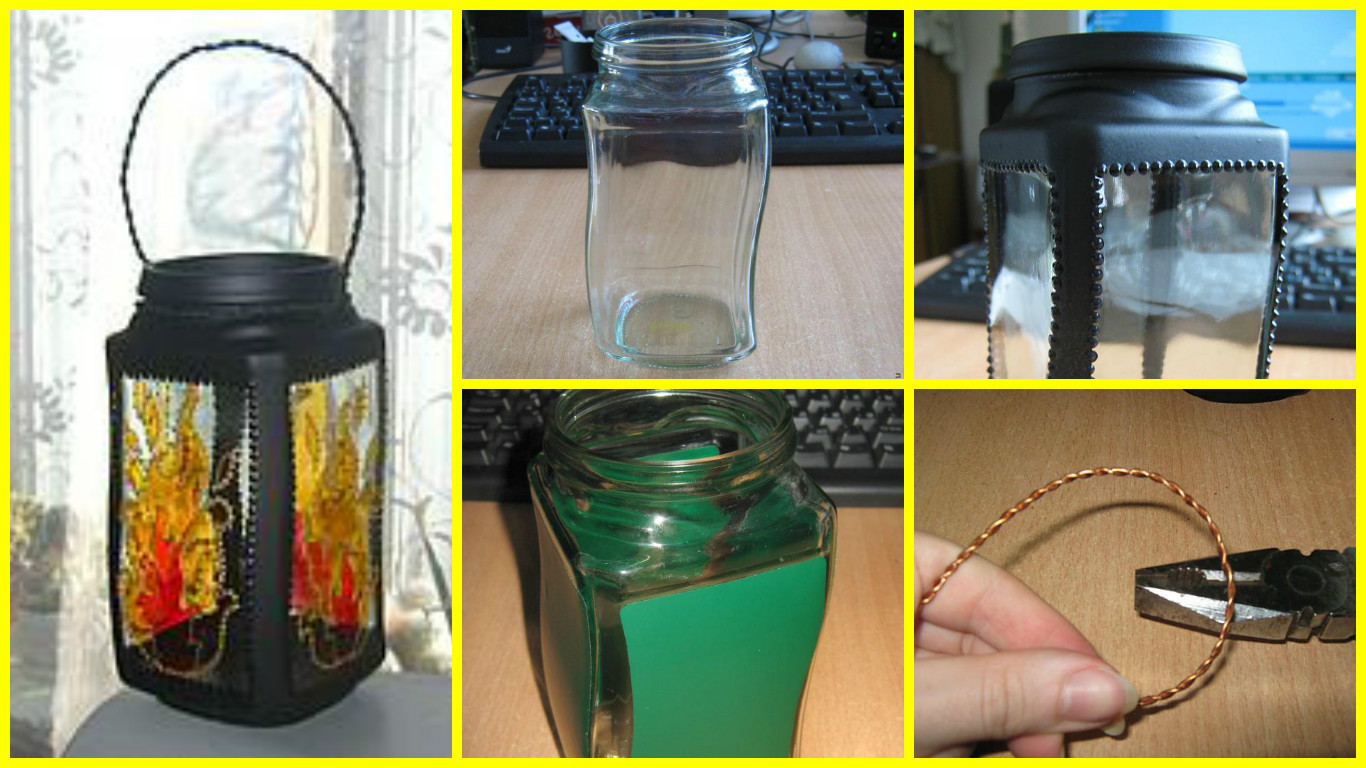
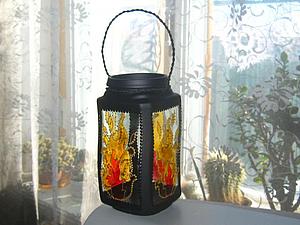
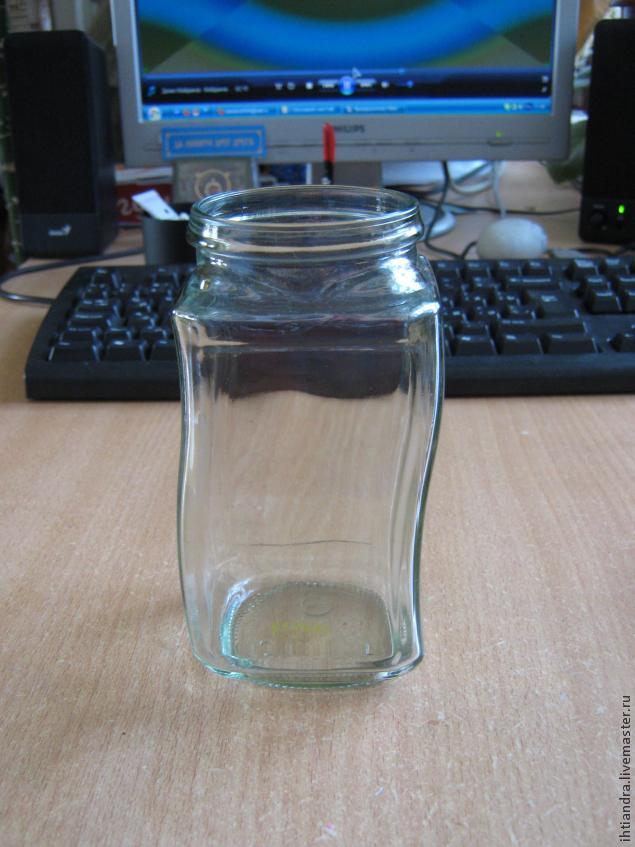 On those sites, we are not going to paint, paste self-adhesive tape (I have it oral). You can use masking tape.
On those sites, we are not going to paint, paste self-adhesive tape (I have it oral). You can use masking tape.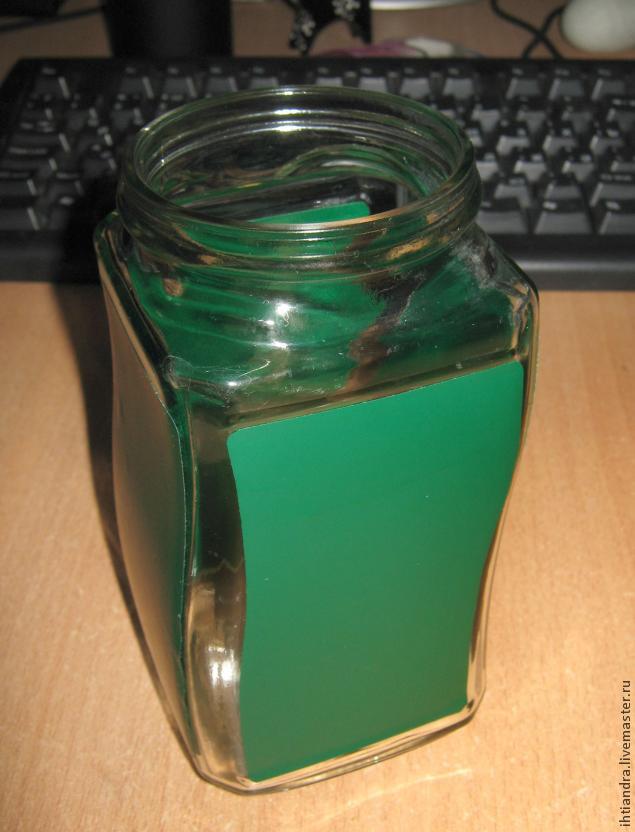 Black paint from a container covers our jar. Give the dry somewhere 30-40 minutes.
Black paint from a container covers our jar. Give the dry somewhere 30-40 minutes.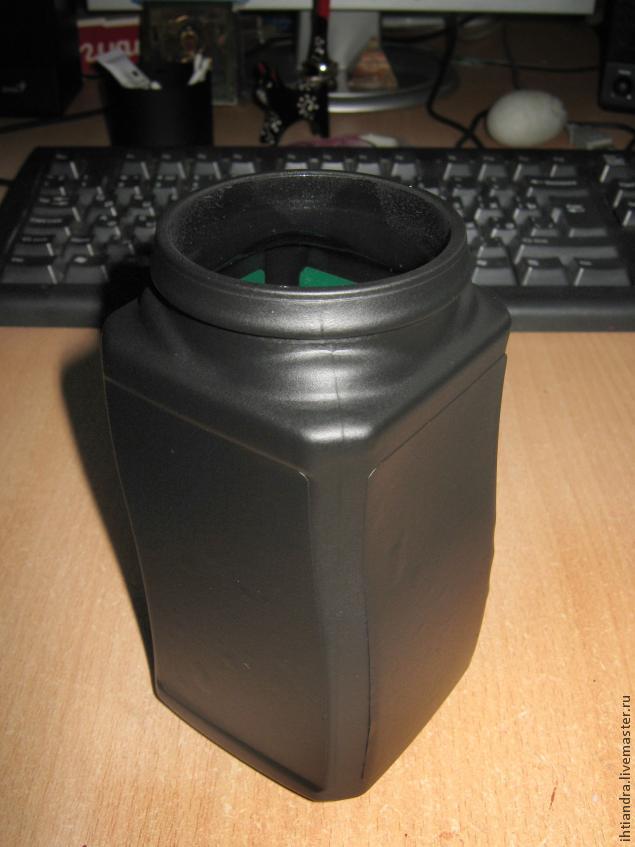 Dried up? Gently peel off the film. It is now we do not need. Our jar shaped like an old lantern. Here on this image and we shall make a start.
Dried up? Gently peel off the film. It is now we do not need. Our jar shaped like an old lantern. Here on this image and we shall make a start.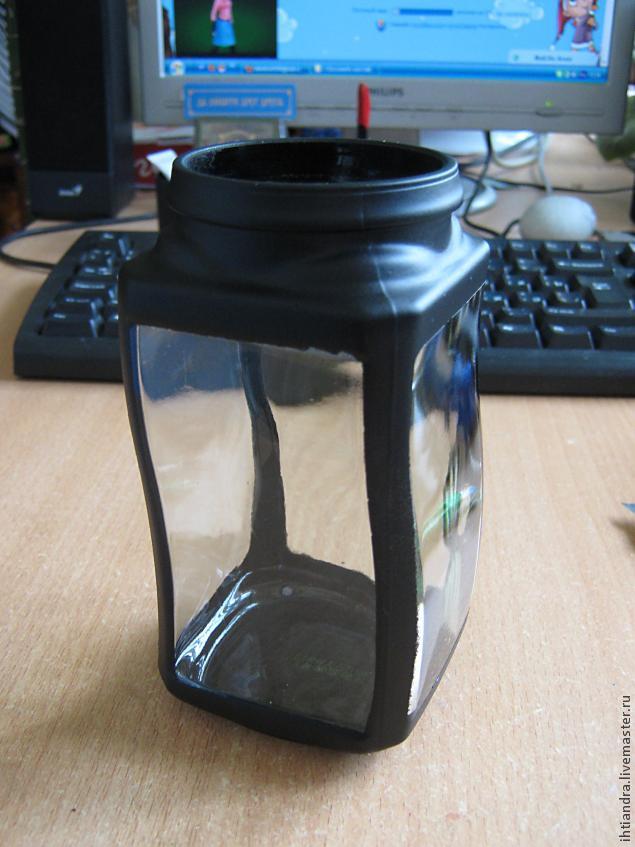 With black dots, contour masks the unevenly torn edges.
With black dots, contour masks the unevenly torn edges.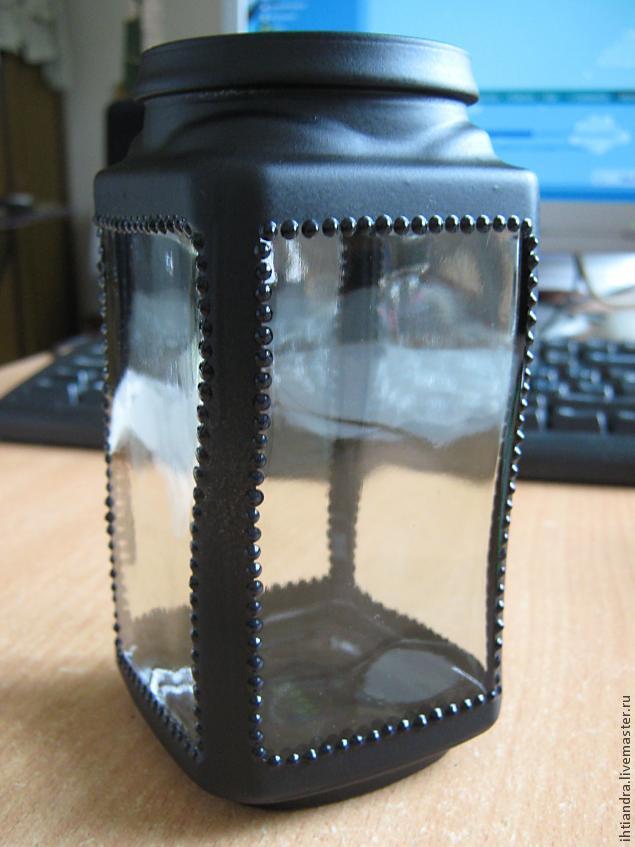 Since this will be a lantern, to draw it on the paper flame.
Since this will be a lantern, to draw it on the paper flame.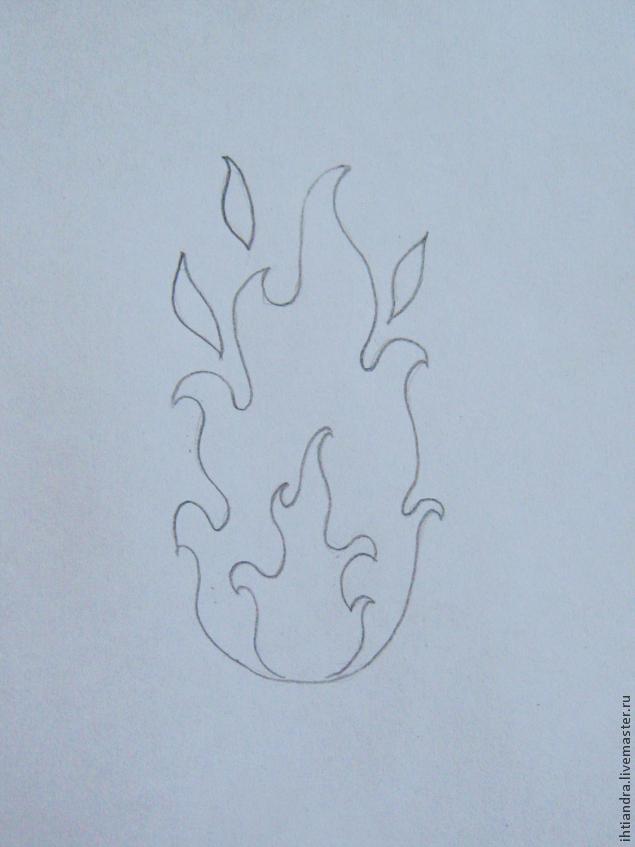 We put into our sketch, fasten with tape. Gold contour draw flames. And so – all four sides.
We put into our sketch, fasten with tape. Gold contour draw flames. And so – all four sides.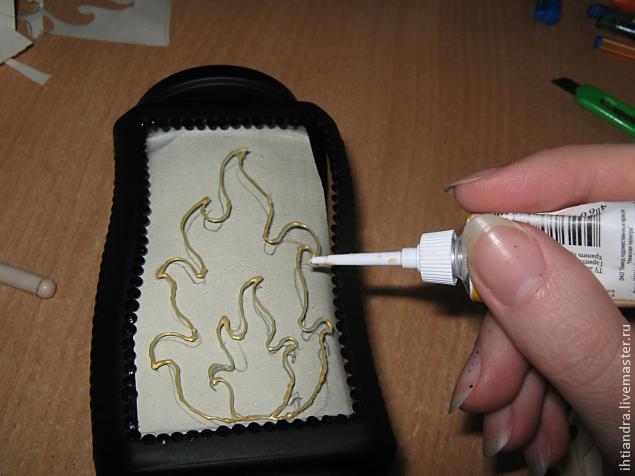 Here’s what happened. Give the circuit to dry. One hour is enough.
Here’s what happened. Give the circuit to dry. One hour is enough.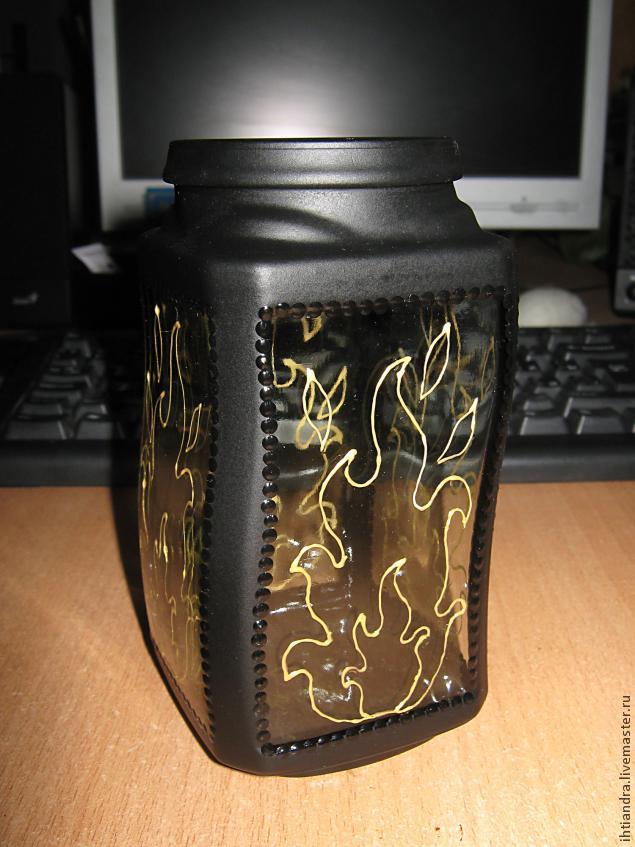 Stained glass paints colorable our flame. From all sides. But! Each side must be completely dry! Not less than a couple of hours in a horizontal plane. Only then will proceed to the next painting.
Stained glass paints colorable our flame. From all sides. But! Each side must be completely dry! Not less than a couple of hours in a horizontal plane. Only then will proceed to the next painting. Result (painted all four faces):
Result (painted all four faces): The handle for the flashlight I made from copper wire. Just two wires twisted together.
The handle for the flashlight I made from copper wire. Just two wires twisted together.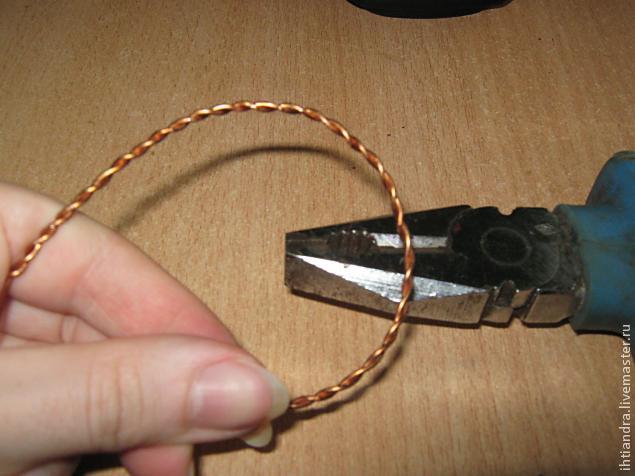 Our “pen”. Maybe someone has a more interesting design. I – what happened).
Our “pen”. Maybe someone has a more interesting design. I – what happened). Around the neck of the jar – do the same intertwined rim, anchoring our pen and painted the same black paint from a container. In this case, it is sure to cover the jar itself something to paint got only on the neck and the handle itself.
Around the neck of the jar – do the same intertwined rim, anchoring our pen and painted the same black paint from a container. In this case, it is sure to cover the jar itself something to paint got only on the neck and the handle itself.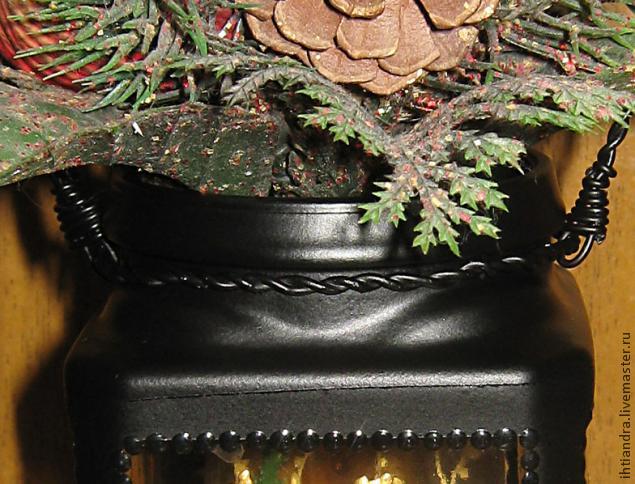 And here it is – our flashlight!
And here it is – our flashlight!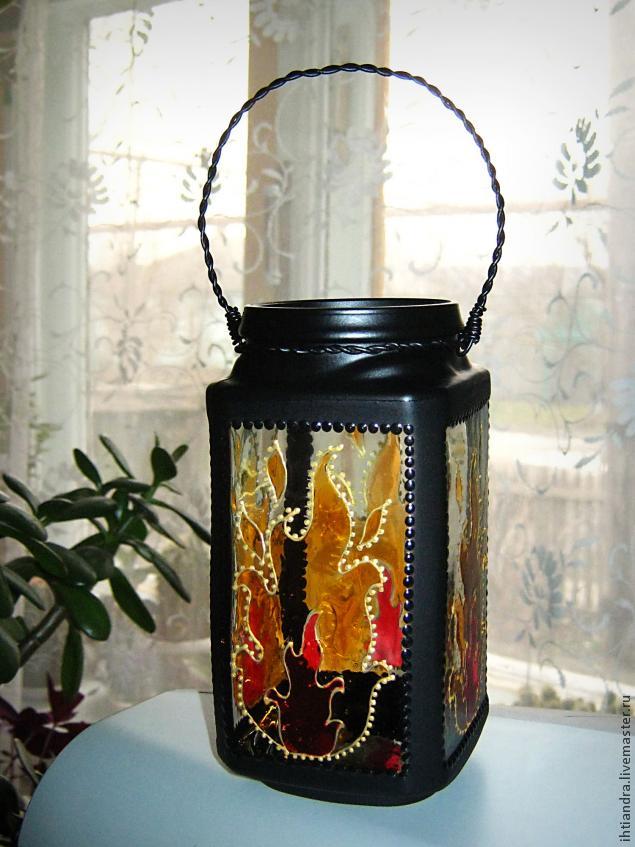
 Spark of my soul))
Spark of my soul)) To install the candles offer the following construction. It will be clearly fixed in a jar and it will be convenient to light a candle.
To install the candles offer the following construction. It will be clearly fixed in a jar and it will be convenient to light a candle. Next cut off here in such a way to get the “sun”.
Next cut off here in such a way to get the “sun”. Buckling edge.
Buckling edge. Insert a candle – come)!
Insert a candle – come)!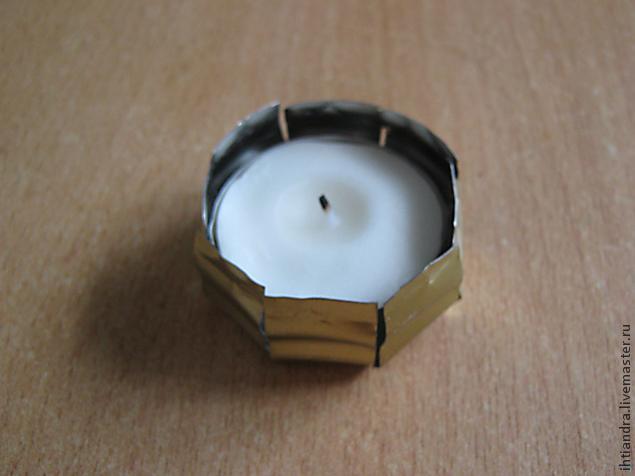 Punched in two places at the hole and pulled through them a copper wire. Fold the edges to avoid scratching the edge of our flashlight.
Punched in two places at the hole and pulled through them a copper wire. Fold the edges to avoid scratching the edge of our flashlight.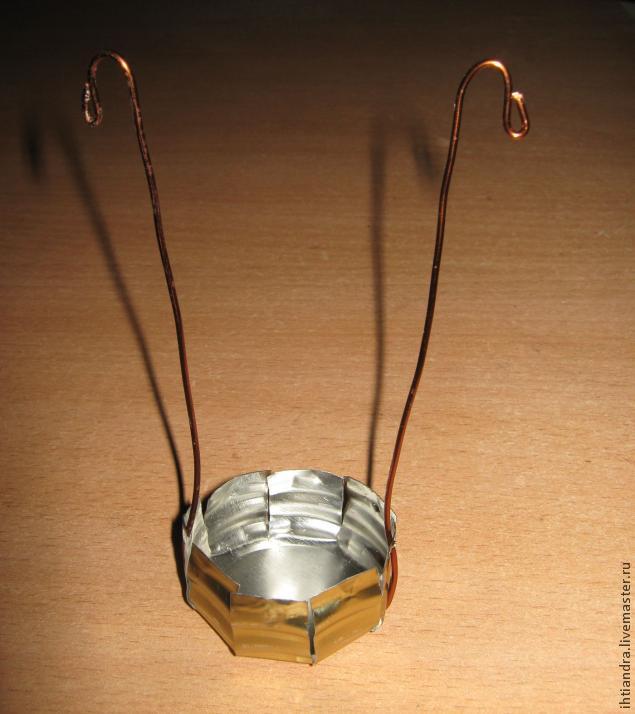 Another angle to make it clear:
Another angle to make it clear: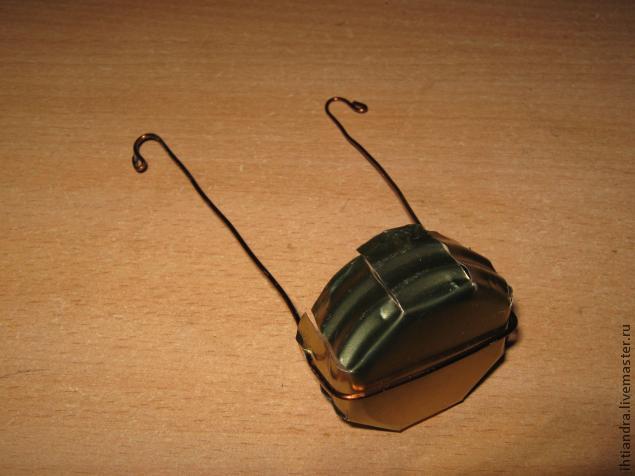 And now the fun! We lit candles and paste it into a flashlight. Antennae fastening just fixed on the neck of the jar (which, by the way, I also painted black paint).
And now the fun! We lit candles and paste it into a flashlight. Antennae fastening just fixed on the neck of the jar (which, by the way, I also painted black paint).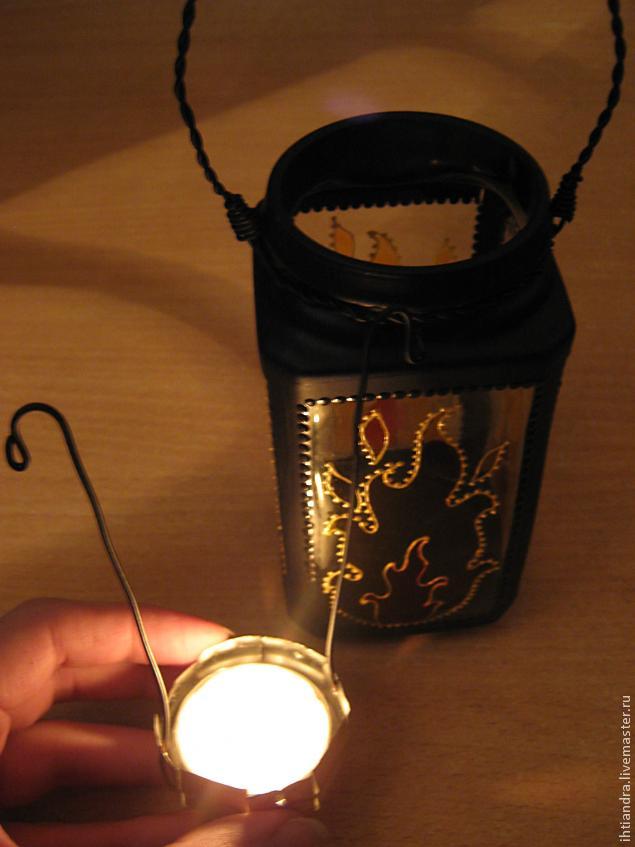 And we admire! ))
And we admire! ))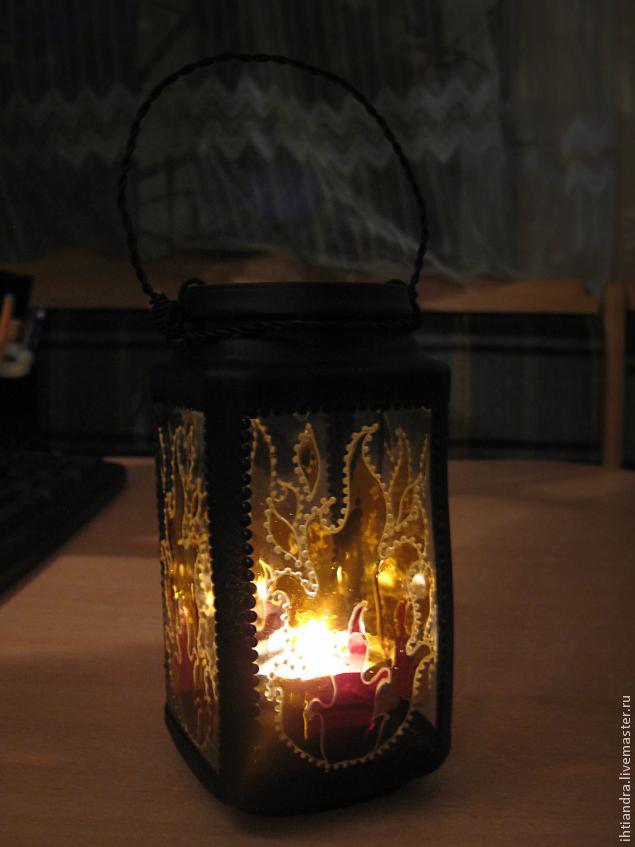
 Can also be used as a vase – too beautiful!
Can also be used as a vase – too beautiful!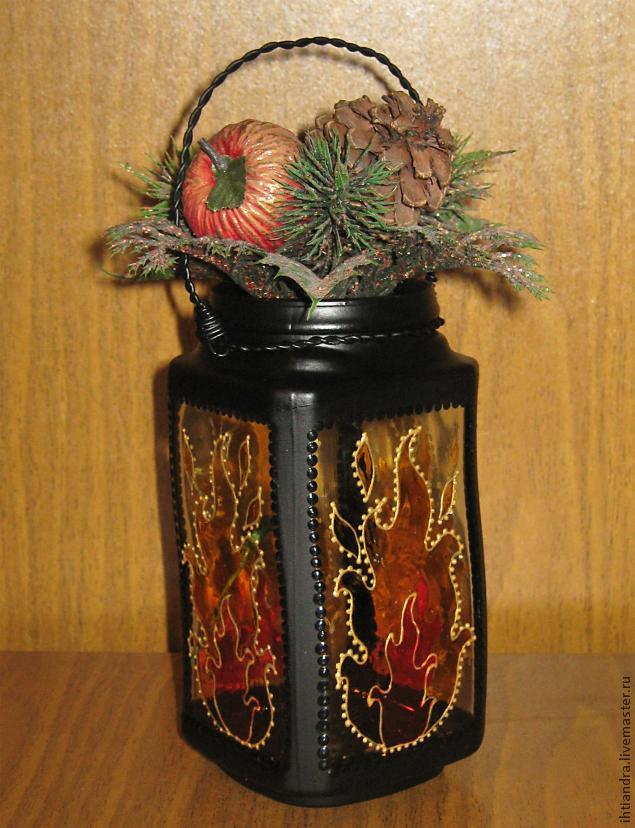 And it is possible and so … But better still as a flashlight, is not it? ))))))
And it is possible and so … But better still as a flashlight, is not it? ))))))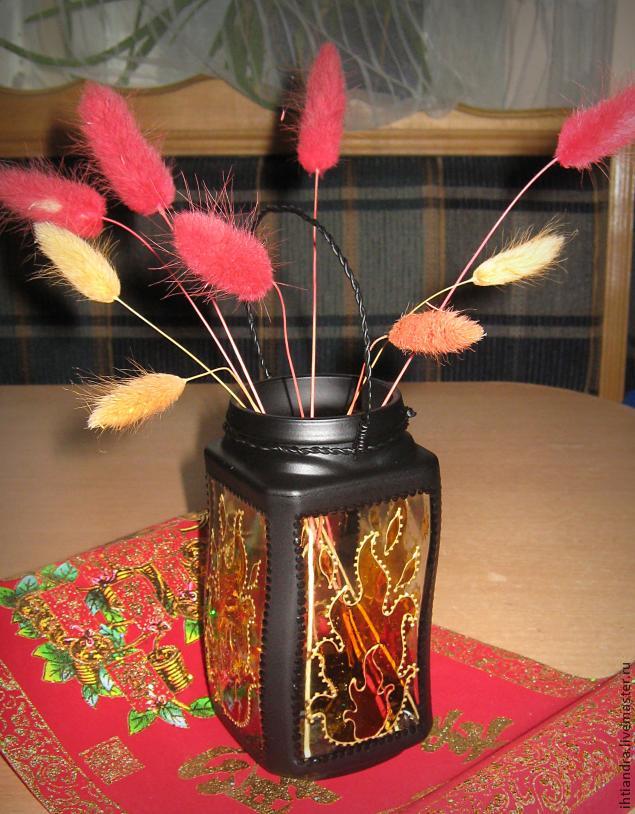 Oh, and our flashlight to bedplate been protected, you can glue the circle of velvet cardboard.
Oh, and our flashlight to bedplate been protected, you can glue the circle of velvet cardboard. Thank you for your attention! Success in creative work!
Thank you for your attention! Success in creative work!
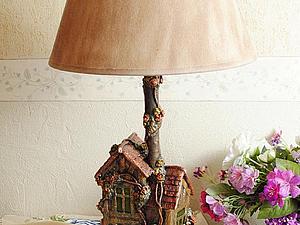
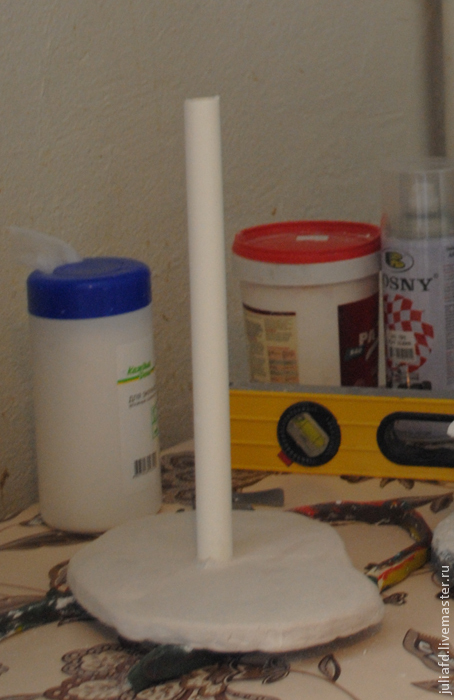 2. The walls and roof – are building a frame house
2. The walls and roof – are building a frame house
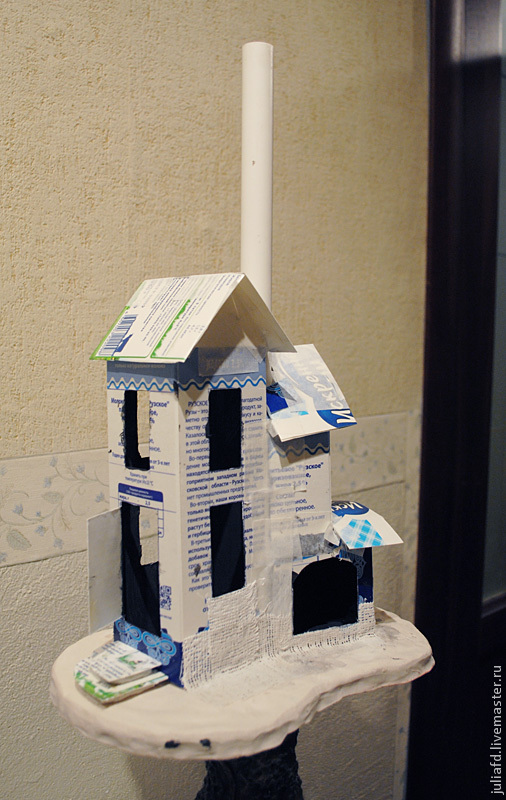 Next outside our construction glue on the adhesive tape pieces of plastic bottles in the window openings and paste our whole design first layer of plaster bandage.
Next outside our construction glue on the adhesive tape pieces of plastic bottles in the window openings and paste our whole design first layer of plaster bandage.
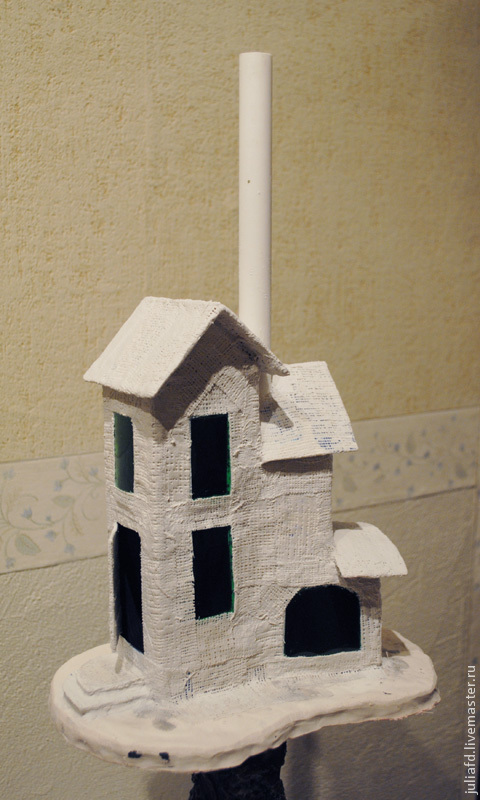
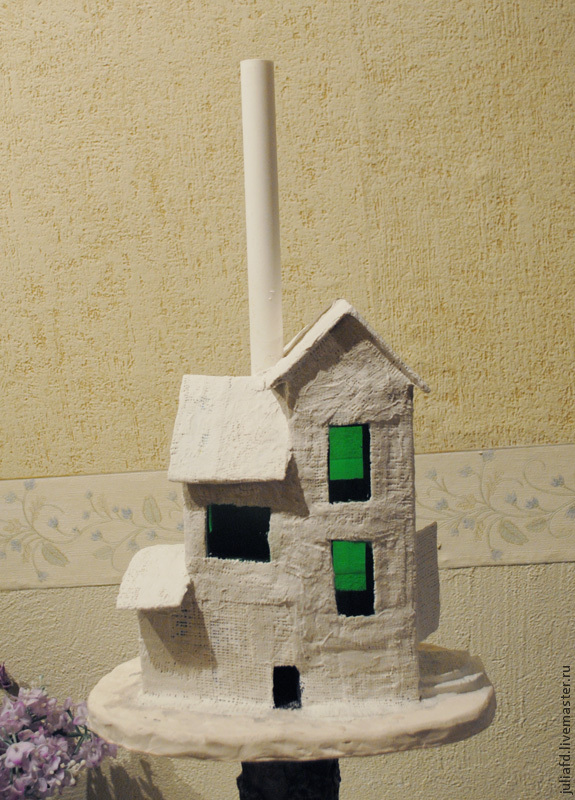

 after starting a sketch of the layout wall plasterer. I use a simple, soft brush. Plaster wall background levels. And the layout of wooden beams I put longitudinal strips to simulate wood on wet plaster.
after starting a sketch of the layout wall plasterer. I use a simple, soft brush. Plaster wall background levels. And the layout of wooden beams I put longitudinal strips to simulate wood on wet plaster.
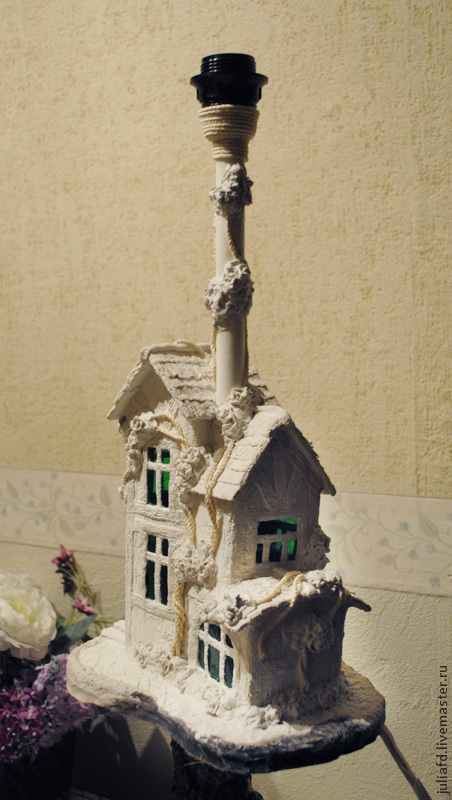
 And we do the first fitting lampshade.
And we do the first fitting lampshade.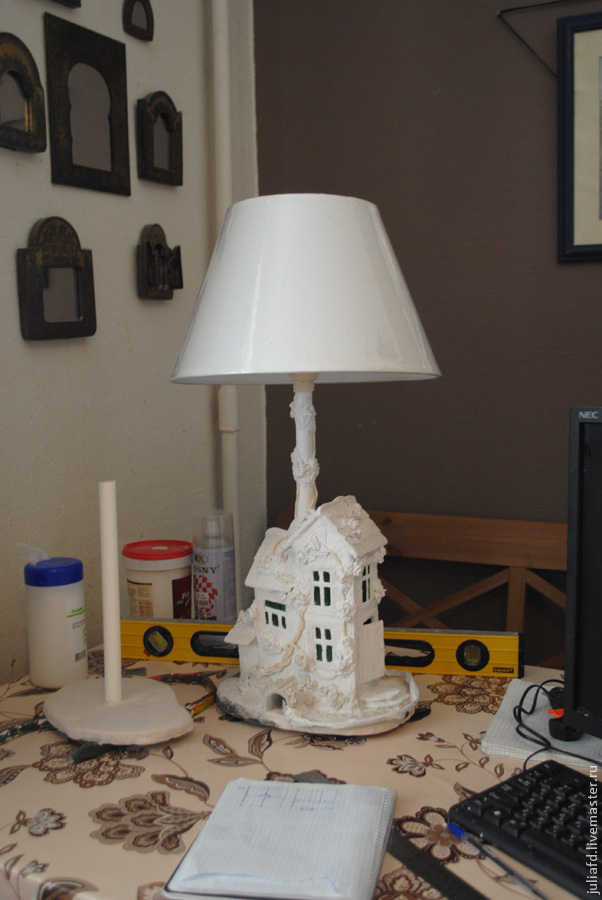 5. Painting and final finish.
5. Painting and final finish.